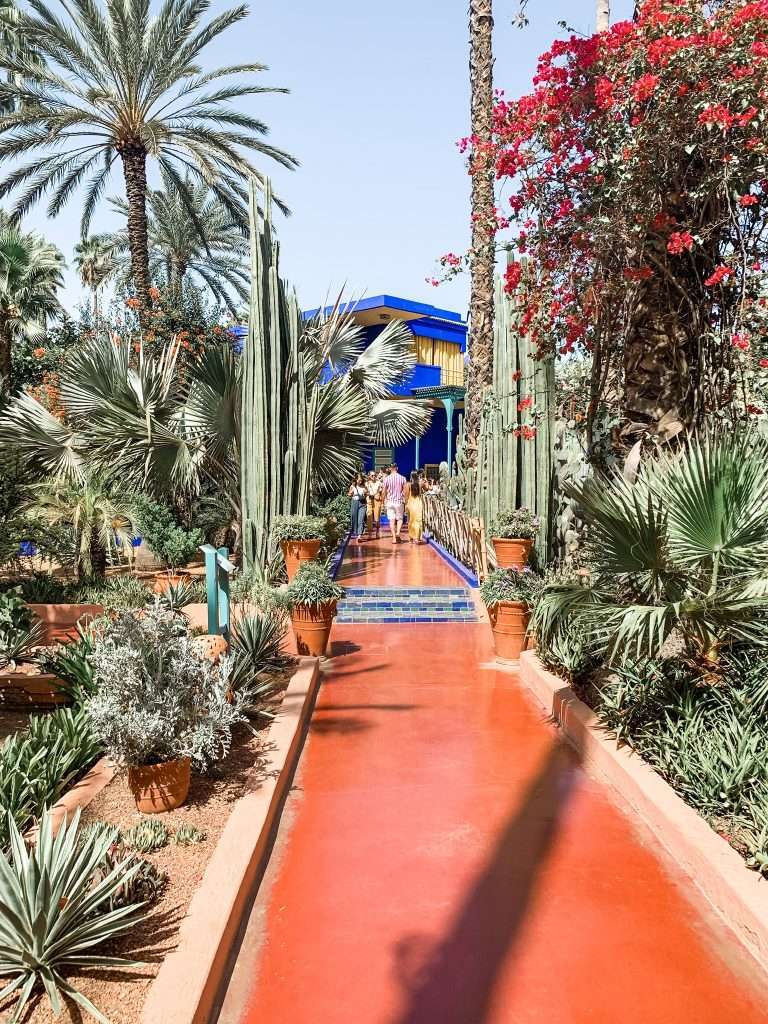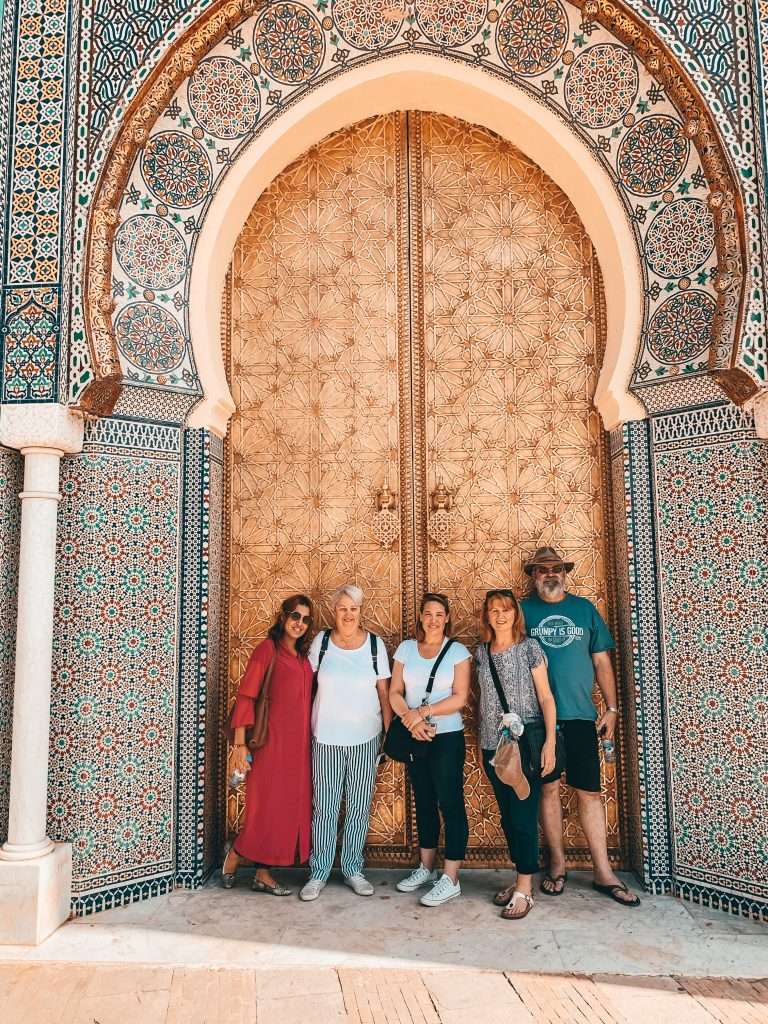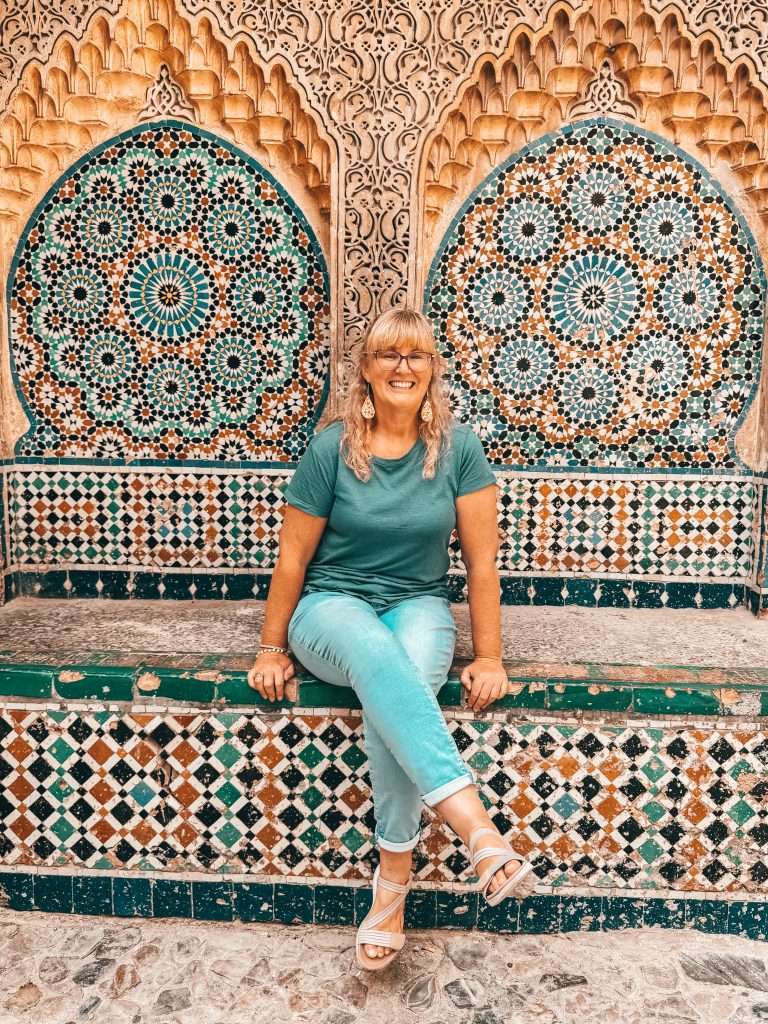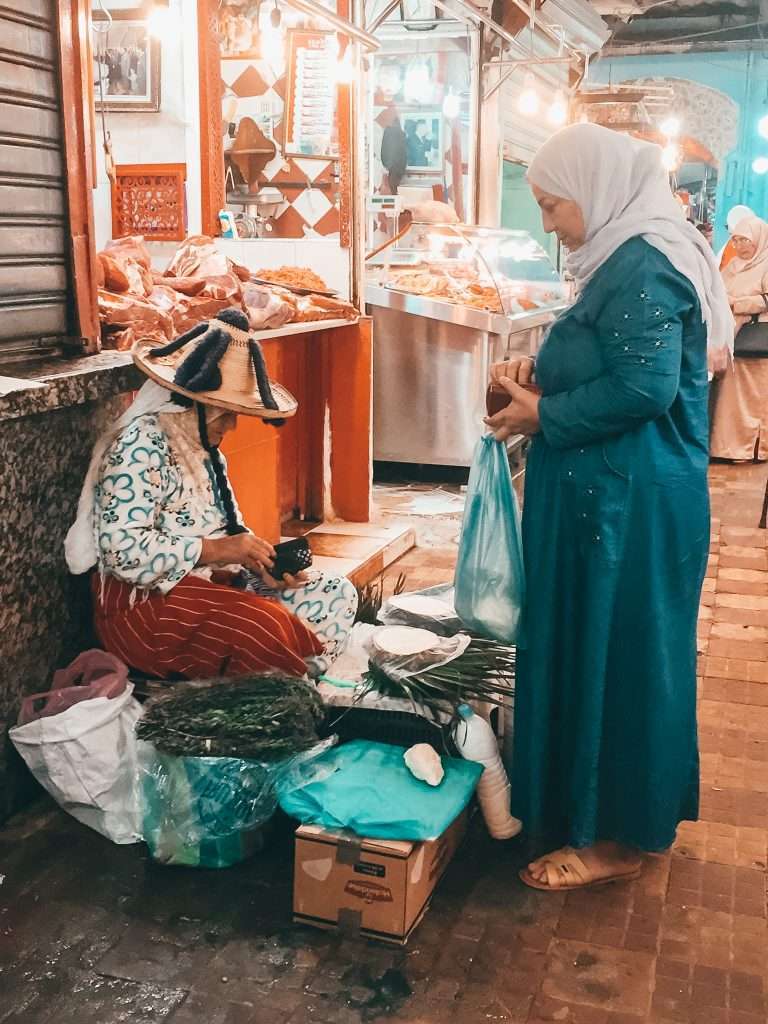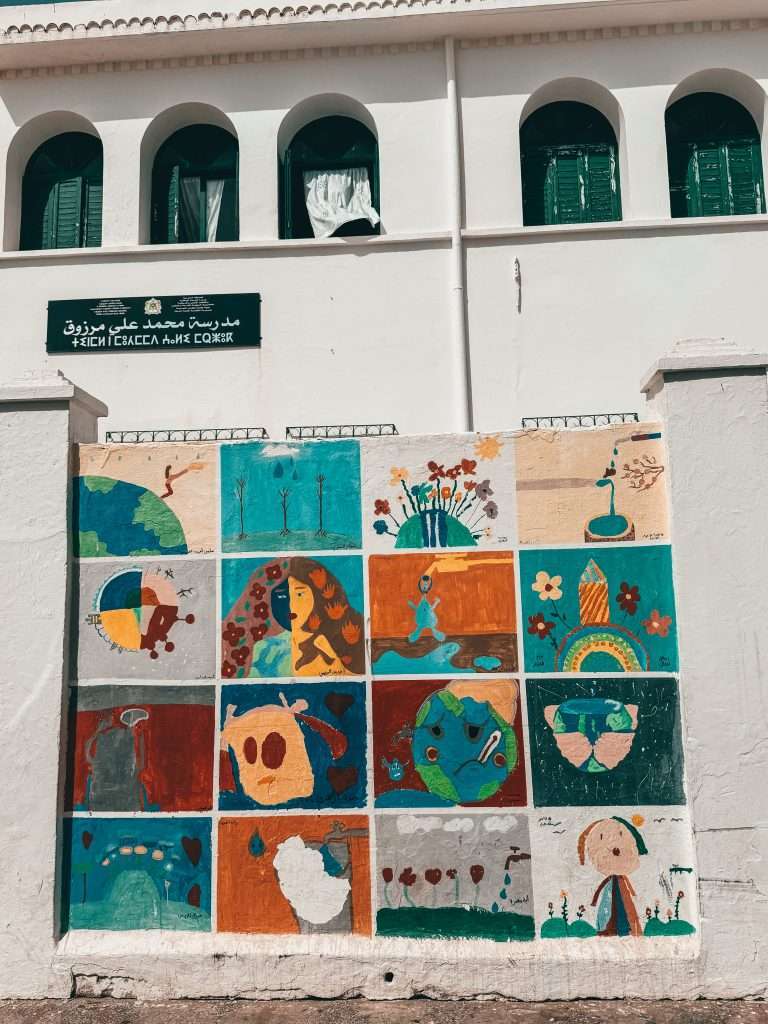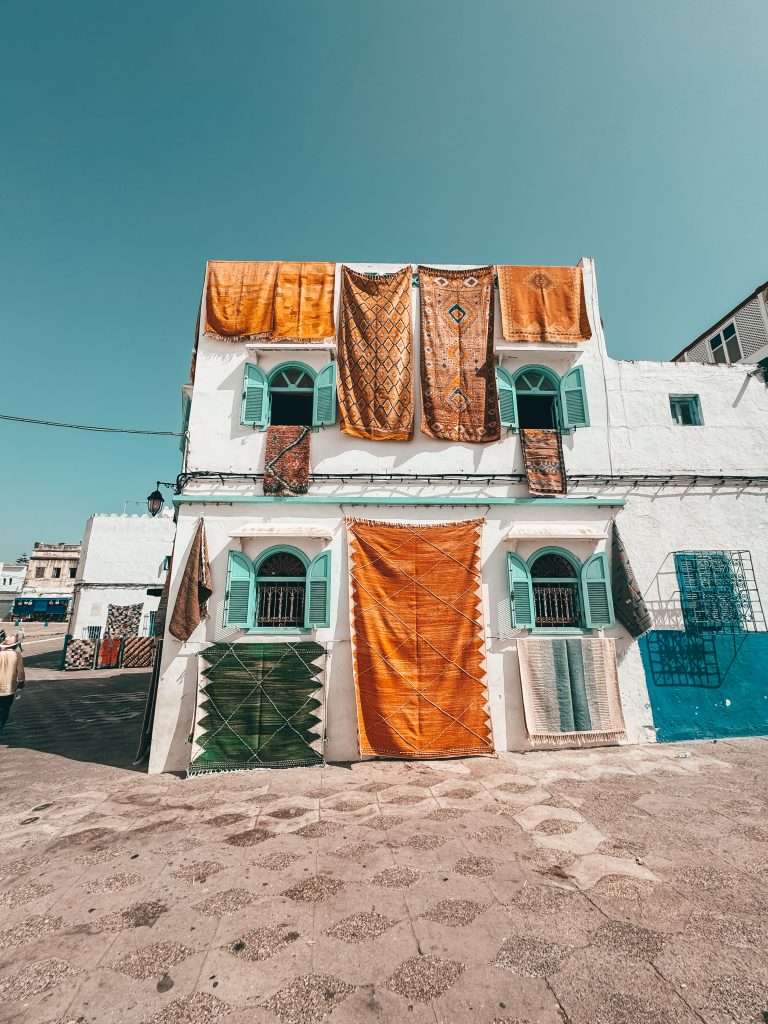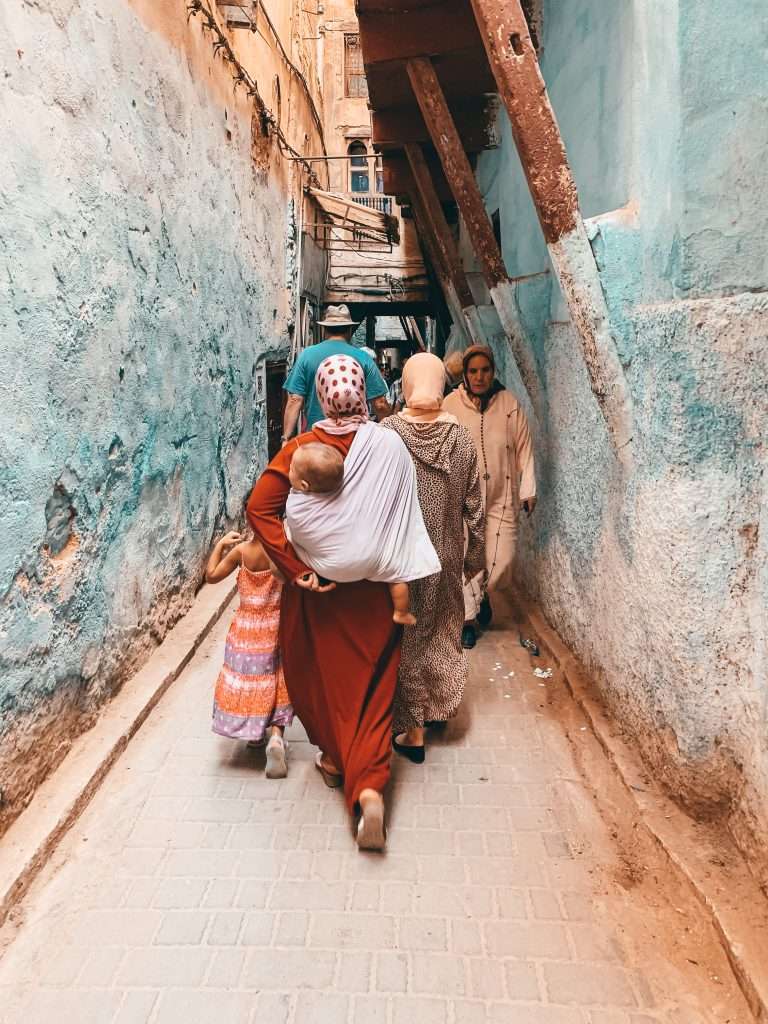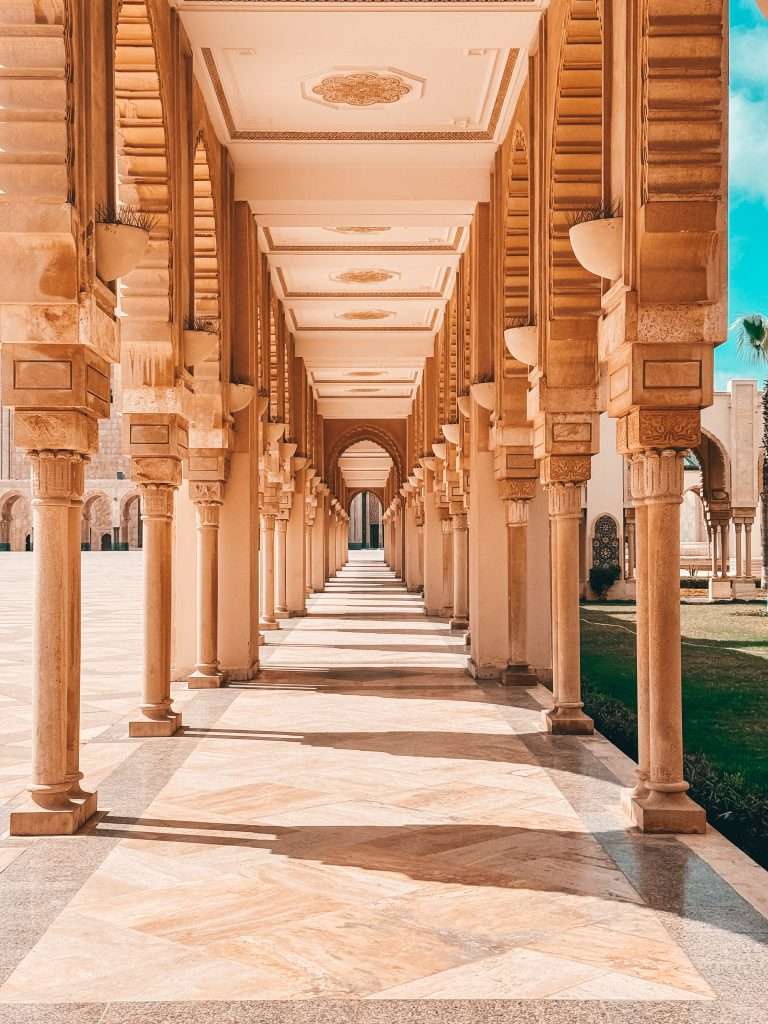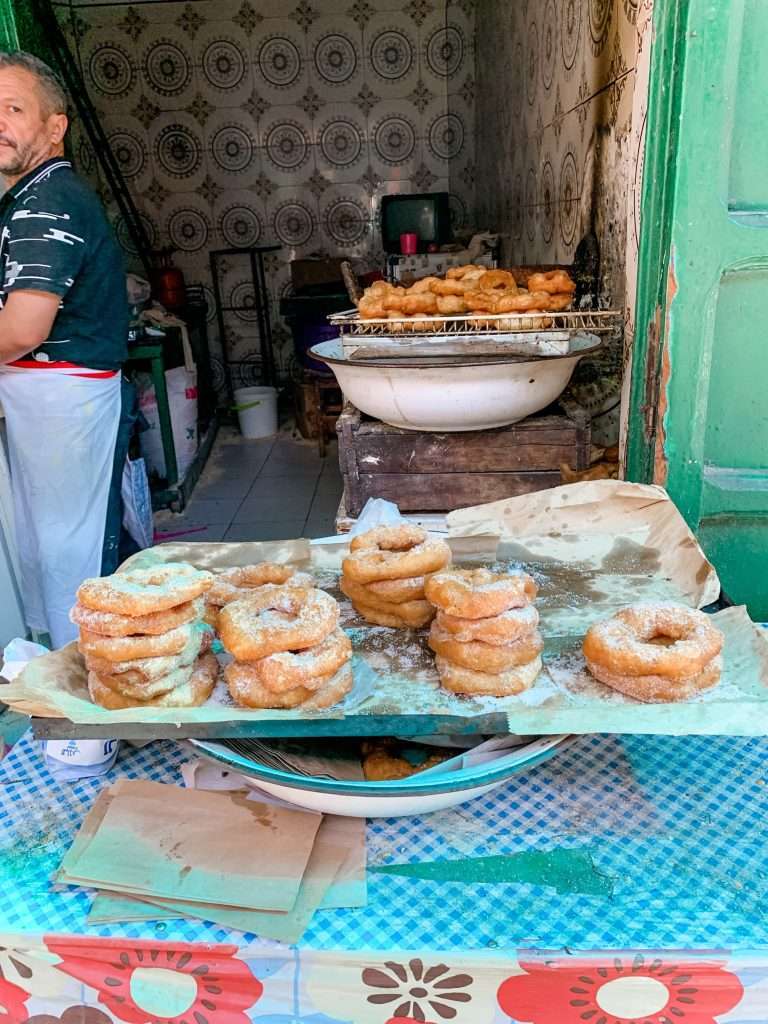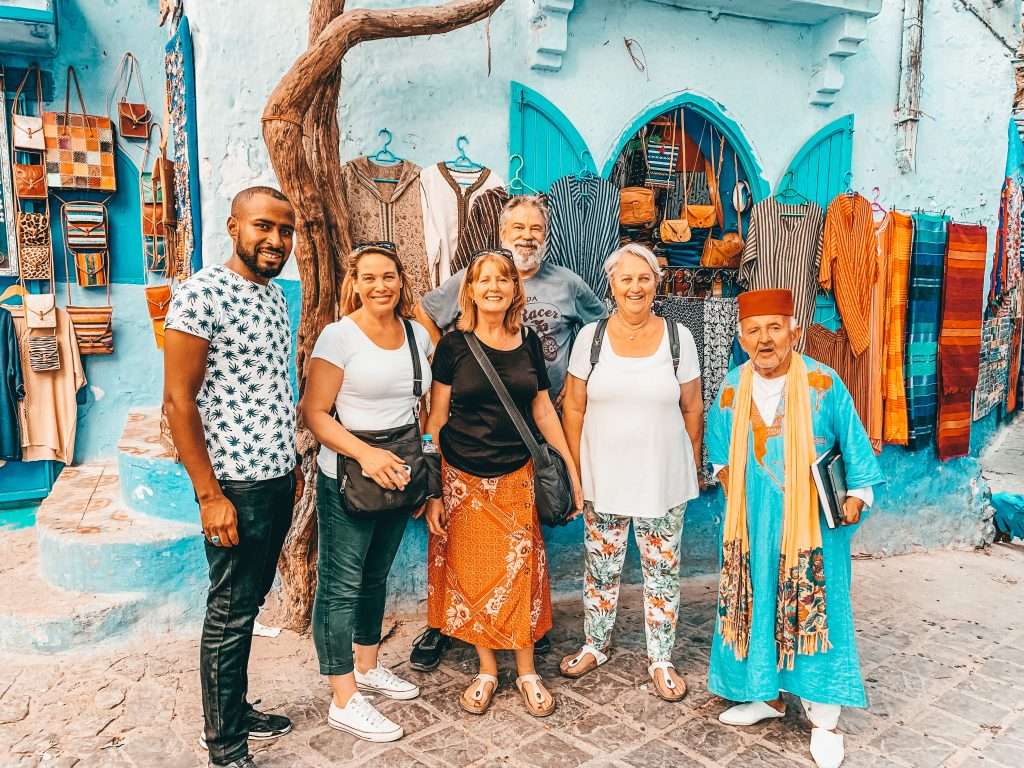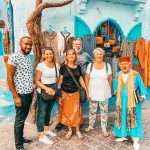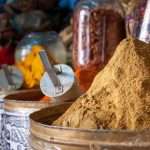There’s a certain magic in Morocco that captivates the soul and leaves an indelible mark on your heart. Having visited this enchanting country three times, I can confidently say that a part of my soul lives here. It’s a place where the ancient and the modern blend seamlessly, offering a rich tapestry of landscapes, cultures, and traditions that beckon travelers from all corners of the globe. Let me take you on a journey through Morocco’s imperial cities, its mesmerising deserts, the stunning Atlantic coast, and the majestic Atlas Mountains. Each region holds its own unique charm and beauty, and I hope to inspire you to explore this incredible country for yourself.
The Imperial Cities: Fez, Marrakech, Meknes, and Rabat
Morocco’s imperial cities are steeped in history, each offering a unique glimpse into the country’s storied past.
Fez/Fes: The Timeless Heart of Morocco
Fez, often referred to as the spiritual and cultural heart of Morocco, is a city that transports you back in time with its labyrinthine medina, a UNESCO World Heritage site. This ancient city, founded in the 9th century, is a living museum of history, where every narrow street and hidden alley tells a story of a bygone era.
The medina of Fez, known as Fes el-Bali, is a maze of over 9,000 winding streets and alleys, making it one of the largest car-free urban areas in the world. Walking through these narrow passageways, you’ll find yourself surrounded by the sights, sounds, and scents of traditional Moroccan life. The absence of cars adds to the city’s old-world charm, where donkeys and handcarts are the primary means of transporting goods. (Although there seems to be more motorbikes taking over the streets these days, you’ll need eyes in the back of your head here)
Fez is renowned for its vibrant arts and crafts scene. The city is a haven for artisans who have mastered their crafts over generations. In the bustling souks, you’ll find exquisite examples of traditional Moroccan craftsmanship, including intricate zellige tilework, hand-woven textiles, ornate brassware, and the famous Fez pottery. The city’s tanneries, particularly the Chouara Tannery, are a must-visit, offering a fascinating glimpse into the age-old process of leather production.
The deep-rooted tradition of craftsmanship in Fez is not just a livelihood but a cultural legacy passed down through the ages. Visiting the workshops and interacting with the artisans offers an intimate understanding of their dedication and skill. Every piece of art and craft from Fez tells a story of creativity, heritage, and meticulous attention to detail.
Fez is more than just a city; it’s a journey through time, a celebration of Moroccan heritage, and a living testament to the enduring spirit of its people. If you seek a destination where history, culture, and art converge, Fez is the perfect place to lose yourself and find inspiration in its timeless beauty. The best time to visit Fez is in the spring (March to May) or autumn (September to November) when the weather is mild and pleasant.
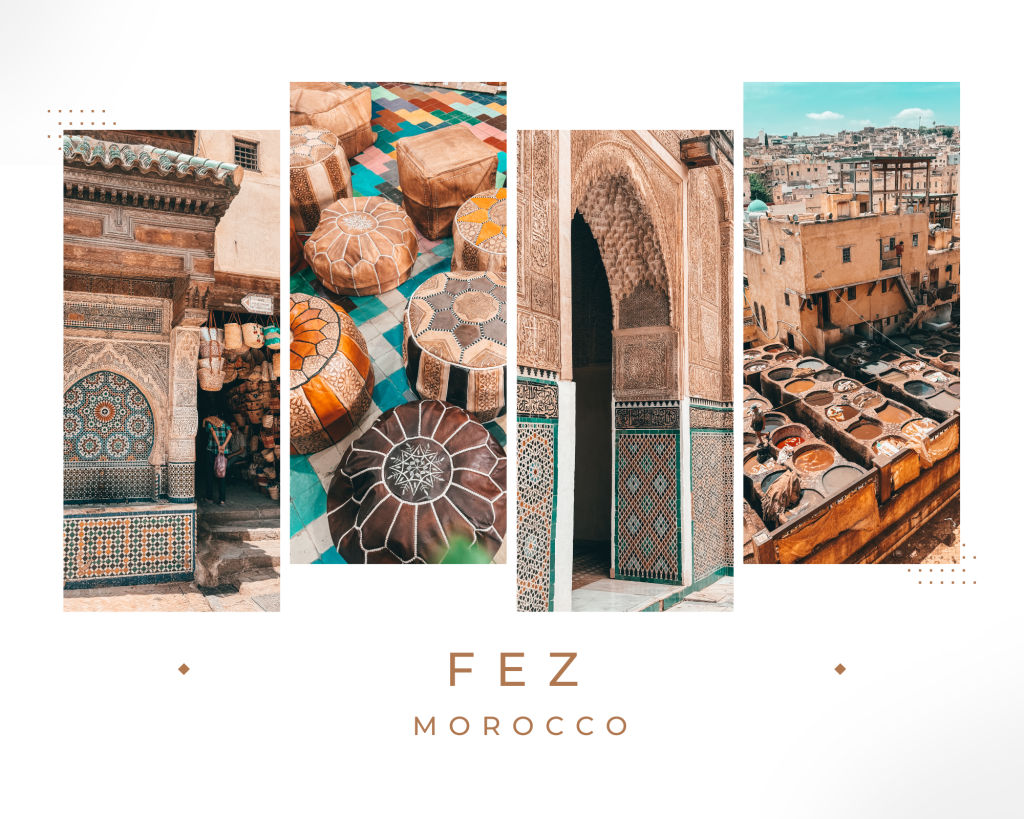
Marrakech: The enchanting Red City
Marrakech, often called the “Red City” for its iconic red sandstone buildings, is a vibrant and enchanting destination that pulses with life and energy. Founded nearly a thousand years ago, Marrakech is a city where history, culture, and modernity intertwine, creating an atmosphere that is both captivating and unforgettable.
At the heart of Marrakech lies the bustling Djemaa el-Fna square, a UNESCO World Heritage site that transforms from a lively marketplace by day into a carnival of storytellers, musicians, and food stalls by night. This square is the beating heart of the city, where locals and visitors alike gather to experience the magic of Marrakech’s nightlife. Just be aware here that you may be approached by snake charmers, monkeys, musicians and traditionally dressed people who will want a tip $$ if you take a photo of them. You can say NO ( or Laa in Arabic ), just keep walking and look away or if you’d like to stop and take a photo or have your photo taken with them have 10 Dirham in hand ready to hand over once photo is done.
The medina of Marrakech is a maze of narrow streets and alleyways, each filled with vibrant souks that offer a sensory overload of colors, sounds, and scents. Unlike Fez, Marrakech’s medina allows for some vehicle access, but many areas remain car-free, enhancing its old-world charm. Here, you can wander through endless rows of stalls selling everything from spices and textiles to lanterns and leather goods.
Marrakech is also a city of artistry and craftsmanship. The souks are a treasure trove of traditional Moroccan crafts, where artisans showcase their skills in weaving, pottery, metalwork, and leatherwork. The city is renowned for its beautiful rugs, hand-embroidered textiles, and intricate ceramics. The vibrant colors and exquisite designs reflect the rich cultural heritage of Morocco and the creativity of its people.
One of the highlights of Marrakech is the Jardin Majorelle, a stunning garden created by French painter Jacques Majorelle and later restored by fashion designer Yves Saint Laurent. This oasis of tranquility is a perfect escape from the hustle and bustle of the medina, with its vibrant blue buildings, exotic plants, and serene water features.
As Marrakech has become very busy lately with tourists, another garden oasis we visited this time to avoid the crowds was the Anima Gardens. This enchanting sanctuary, created by the universal artist André Heller, spans three opulent hectares. It is a magical place of sensuality, wonder, contemplation, joy, healing, and inspiration. It is around a 30 minute drive out of Marrakech to the gardens but highly recommended.
Marrakech is a city that never ceases to surprise and delight. Its lively atmosphere, rich history, and dedication to the arts make it a must-visit destination for anyone seeking to experience the true essence of Morocco. Whether you’re exploring the labyrinthine streets of the medina, bargaining in the souks, or simply soaking in the vibrant energy of Djemaa el-Fna, Marrakesh will leave you enchanted and inspired. The ideal times to visit Marrakech are spring and autumn when the temperatures are comfortable.
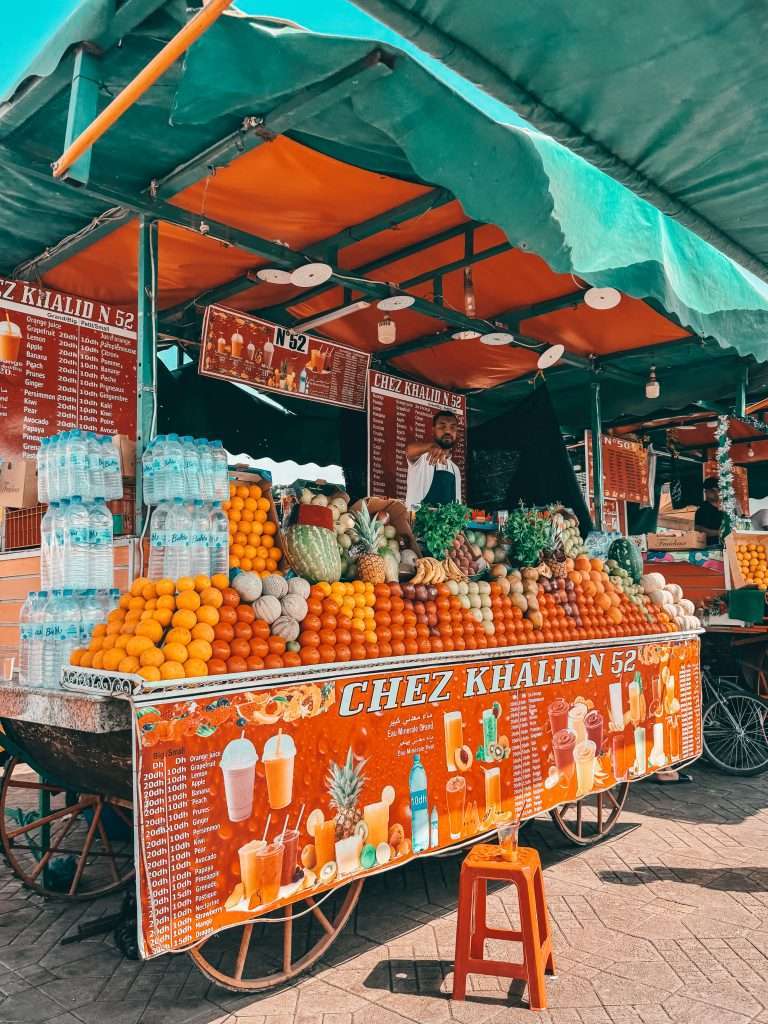
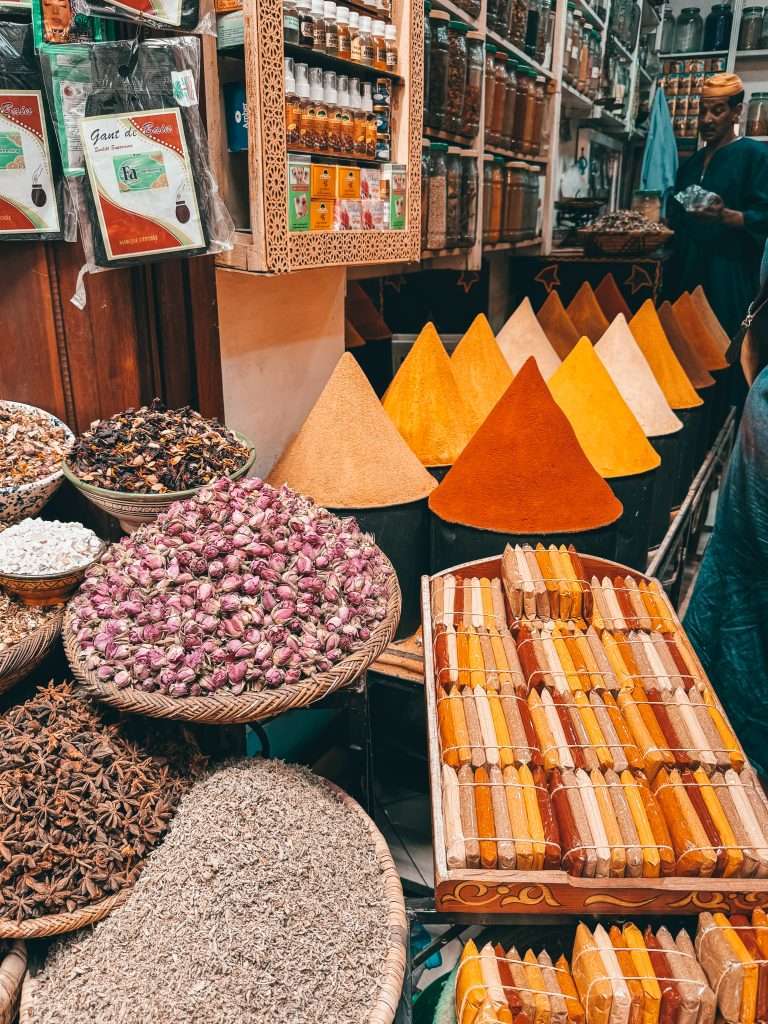
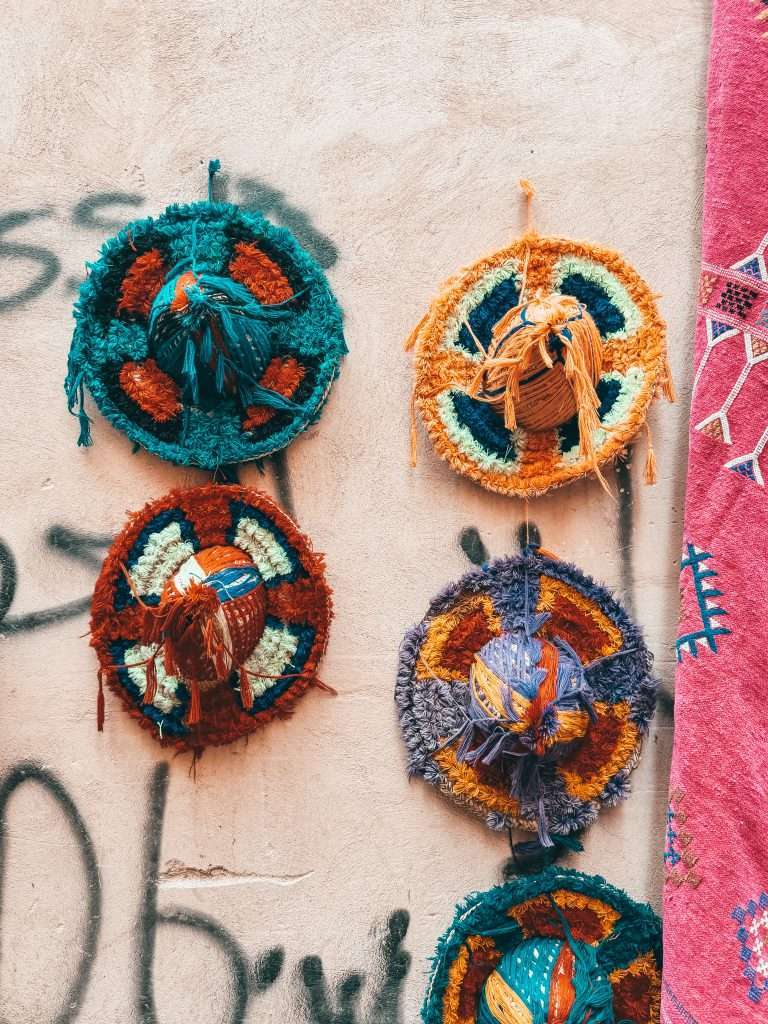
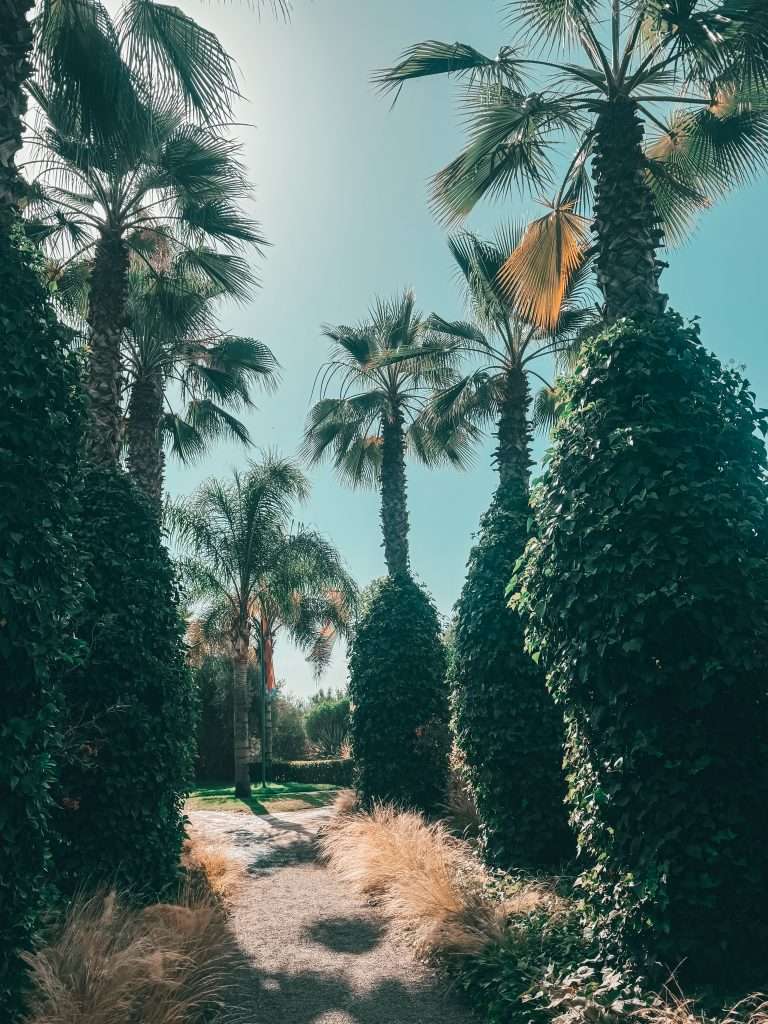
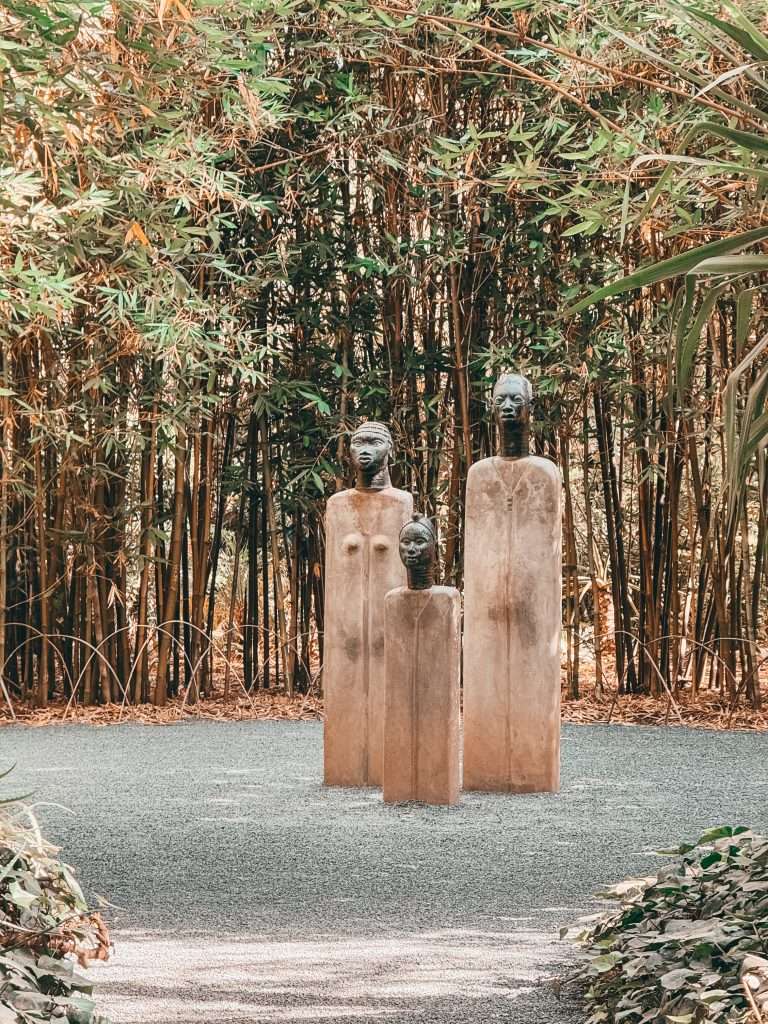
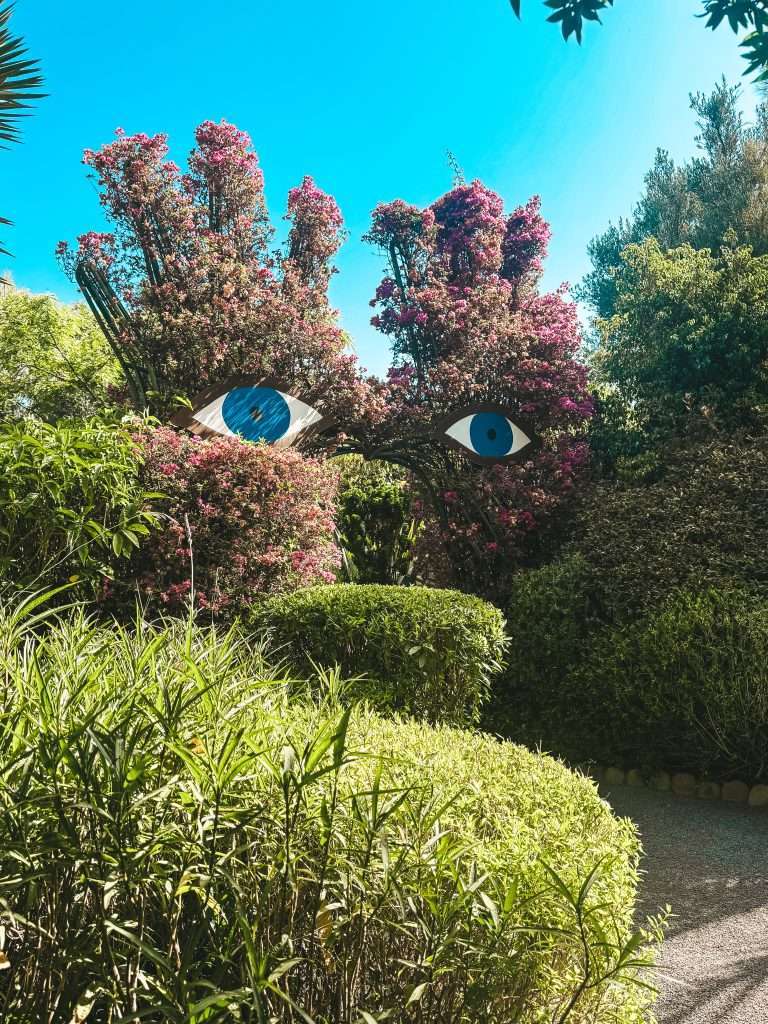
Meknes: The Hidden Gem of Morocco
Meknes, often overshadowed by its more famous neighbors, is a hidden gem that offers a unique blend of history, culture, and charm. Founded in the 11th century by the Almoravids, Meknes became a significant imperial city under the rule of Sultan Moulay Ismail in the 17th century. Known as the “Versailles of Morocco,” Meknes is a city where the grandeur of the past meets the tranquility of the present.
The medina of Meknes, a UNESCO World Heritage site, is a maze of narrow streets and alleys that exude an old-world charm. Unlike the bustling medinas of Marrakesh and Fez, Meknes offers a more relaxed and intimate experience. Walking through its narrow passageways, you’ll discover hidden treasures, from traditional souks to historic landmarks, without the overwhelming crowds.
Meknes is renowned for its impressive gates and palaces, reflecting the city’s rich history and architectural splendor. The Bab Mansour gate, considered one of the most beautiful gates in Morocco, stands as a testament to the city’s former glory. Nearby, the vast Heri es-Souani granaries and the Royal Stables showcase the grandeur of Sultan Moulay Ismail’s ambitious building projects. This year in 2024, most of the monuments were being restored and not sure of the date when these will be finished but I’d be excited to visit again when all is completed.
Meknes is known for its exquisite woodwork, intricate tile mosaics, and traditional Moroccan rugs. The local artisans, who have inherited their skills through generations, create stunning works of art that reflect the city’s unique identity and craftsmanship.
One of the most captivating aspects of Meknes is its relaxed atmosphere and friendly locals. The city’s slower pace allows for deeper connections and a more immersive experience. Visiting a local family for tea or sharing a meal provides an authentic glimpse into Moroccan hospitality and culture.
Meknes is also surrounded by stunning natural landscapes, making it an ideal base for exploring the nearby Middle Atlas Mountains and the Roman ruins of Volubilis. We absolutely loved visiting Volubilis, so make sure this is on your list to visit. (I’ll do another blog just on this soon)
The best time to visit Meknes is during the spring and autumn months when the weather is mild and the city’s gardens and orchards are in full bloom.
Meknes may not have the fame of Marrakesh or Fez, but its rich history, architectural beauty, and warm hospitality make it a destination worth discovering. If you’re looking for an authentic Moroccan experience away from the tourist crowds, Meknes is the perfect place to immerse yourself in the country’s rich heritage and timeless charm.
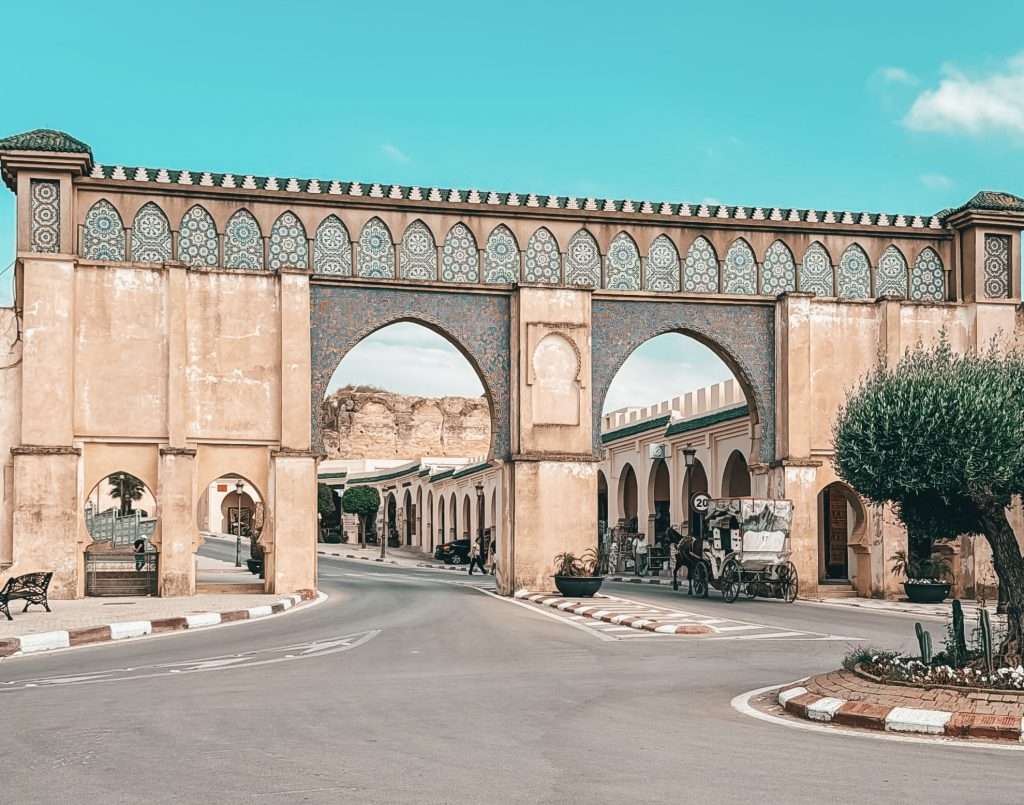
Rabat: The Elegant Capital of Morocco
Rabat, Morocco’s elegant capital, is a city where modernity harmoniously blends with historical charm. Overlooking the Atlantic Ocean, Rabat offers a unique and serene atmosphere, setting it apart from the bustling energy of cities like Marrakech and Fez. Founded in the 12th century, Rabat has grown into a political and cultural hub, embodying the rich heritage and progressive spirit of Morocco.
The city’s medina, a UNESCO World Heritage site, is a delightful mix of old and new. Unlike the labyrinthine medinas of other Moroccan cities, Rabat’s medina is more orderly and easier to navigate, yet it still offers the enchanting experience of traditional Moroccan life. The narrow streets are lined with shops selling everything from spices and textiles to artisanal crafts and jewelry. The absence of cars in many parts of the medina adds to its peaceful charm, allowing you to leisurely explore its hidden treasures.
Rabat is renowned for its historical landmarks that reflect the city’s illustrious past. The Kasbah of the Udayas, a stunning fortress overlooking the river and the ocean, is a must-visit. Its Andalusian Gardens and picturesque blue and white streets provide a tranquil escape and a perfect backdrop for photographs. The Hassan Tower, an incomplete minaret from the 12th century, stands as a symbol of Rabat’s rich history, while the Mausoleum of Mohammed V, with its exquisite architecture and intricate details, pays homage to the country’s revered monarchs.
The arts and crafts scene in Rabat is vibrant and diverse. The city is known for its beautiful ceramics, handwoven rugs, and delicate embroidery. Artisans in Rabat continue to practice traditional methods passed down through generations, creating masterpieces that capture the essence of Moroccan artistry. The city’s galleries and markets offer a glimpse into the creative spirit that thrives here, making it a haven for art lovers and collectors.
One of Rabat’s most charming aspects is its serene coastal location. The city boasts beautiful beaches and a pleasant climate, making it an ideal destination for relaxation and outdoor activities. The Corniche, a scenic waterfront promenade, is perfect for leisurely strolls, offering stunning views of the ocean and the city skyline.
Rabat’s modernity is also evident in its infrastructure and cultural institutions. The city is home to numerous museums, theaters, and cultural centers that celebrate Moroccan heritage and contemporary art. The National Museum of Moroccan Art and the Mohamed VI Museum of Modern and Contemporary Art are among the notable institutions that highlight Rabat’s role as a cultural capital.
The best time to visit Rabat is during the spring (March to May) and autumn (September to November) when the weather is mild and pleasant. These seasons also coincide with various cultural festivals and events, providing a deeper insight into the city’s vibrant cultural scene.
Rabat is a city that gracefully balances its historical roots with a forward-looking vision. Its elegant charm, rich cultural heritage, and welcoming atmosphere make it a perfect destination for those seeking a refined and authentic Moroccan experience. Whether you’re exploring its historical sites, enjoying its coastal beauty, or immersing yourself in its artistic scene, Rabat promises a journey of discovery and inspiration.
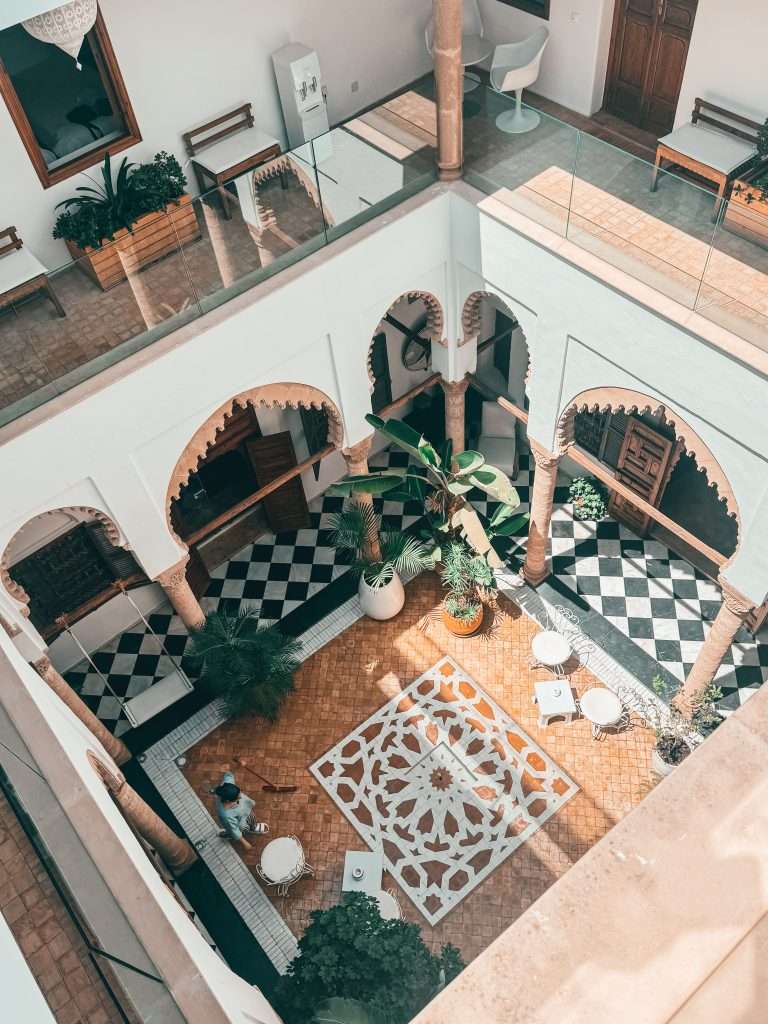
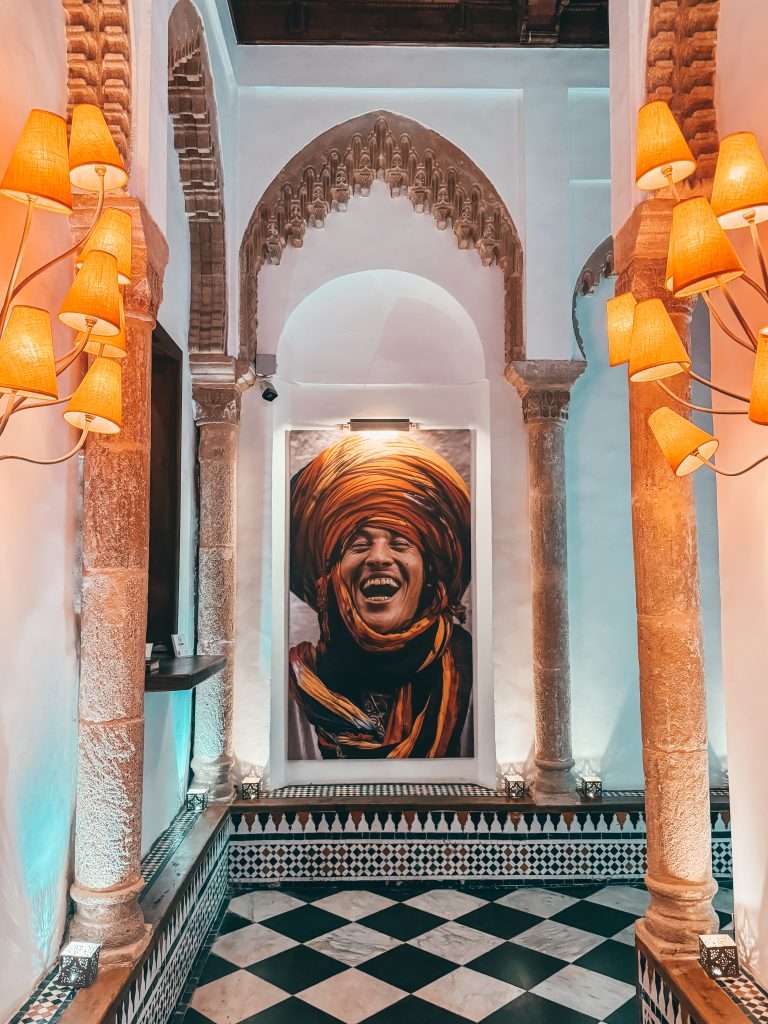
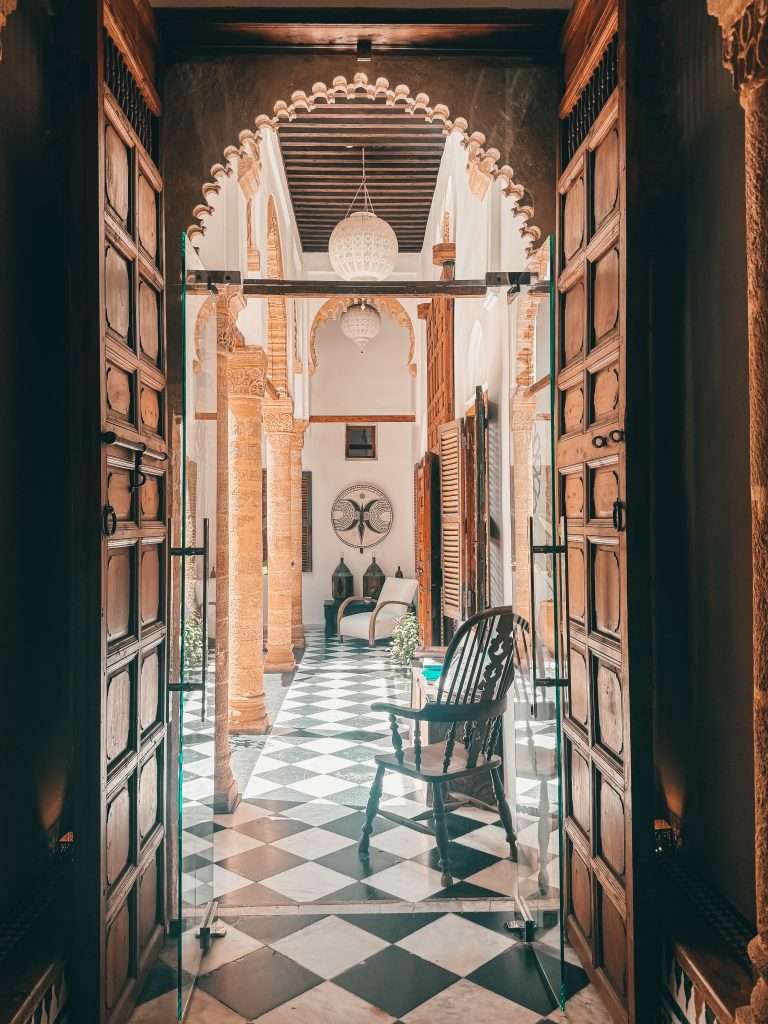
The Atlas Mountains: Peaks, Valleys, and Berber Traditions
The Atlas Mountains are a stunning natural barrier that stretches across Morocco, offering breathtaking landscapes and rich cultural experiences. This majestic mountain range is home to traditional Berber villages, where time seems to stand still, and the beauty of nature reigns supreme.
High Atlas: This region is perfect for adventure seekers and nature lovers. The towering peaks, including Mount Toubkal, the highest in North Africa, offer challenging hikes and panoramic views. Spring and autumn are the best times to visit, as the weather is cooler and the landscapes are lush with blooming wildflowers.
Middle Atlas: Known for its cedar forests and charming villages, the Middle Atlas offers a serene escape from the bustling cities. The best time to explore this region is during the spring and autumn months when the weather is ideal for outdoor activities.
Anti-Atlas: This southern range is less visited but equally captivating, with its unique rock formations and traditional Berber villages. The best time to visit is from October to April when the temperatures are more manageable.
One of the most memorable experiences in the Atlas Mountains is visiting a local Berber family. Here, you can learn the art of making traditional mint tea, often referred to as “Moroccan whiskey,” and see how traditional bread is baked in clay ovens. These intimate moments provide a deep connection to the local culture and a glimpse into the daily lives of the Berber people.
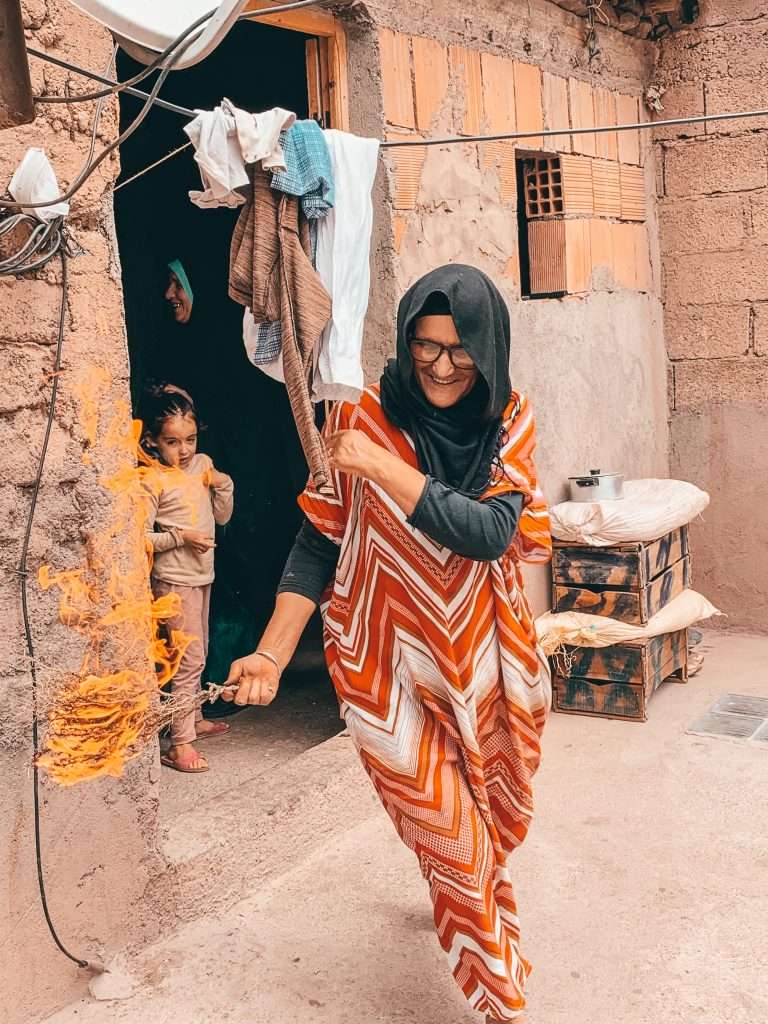
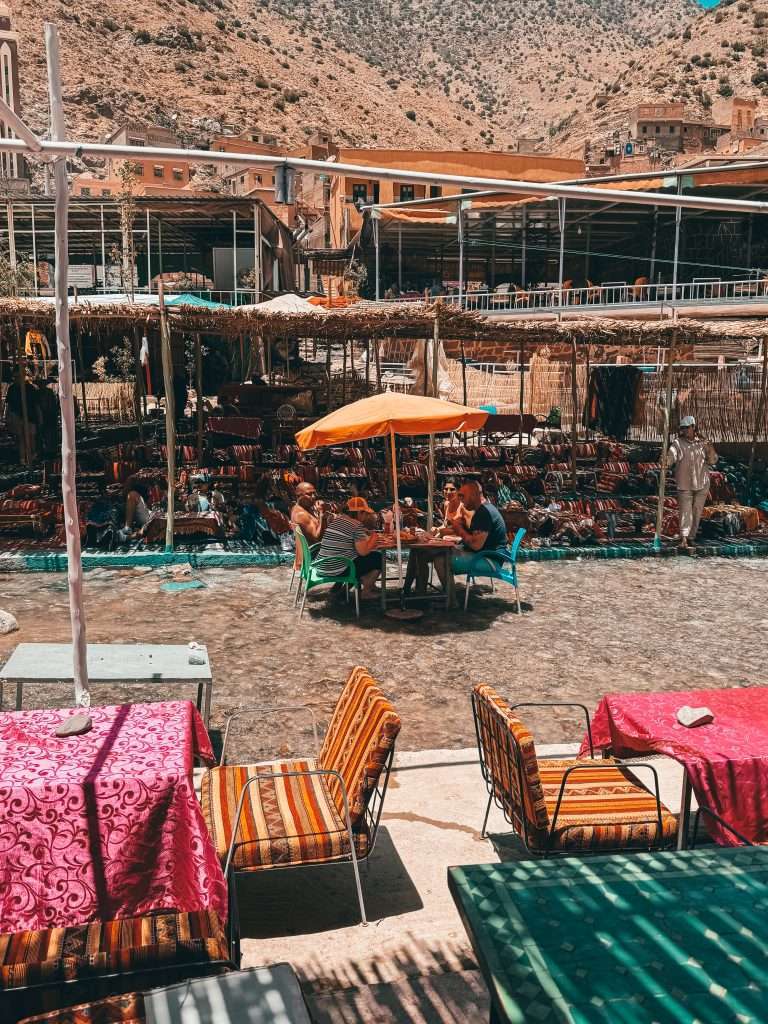
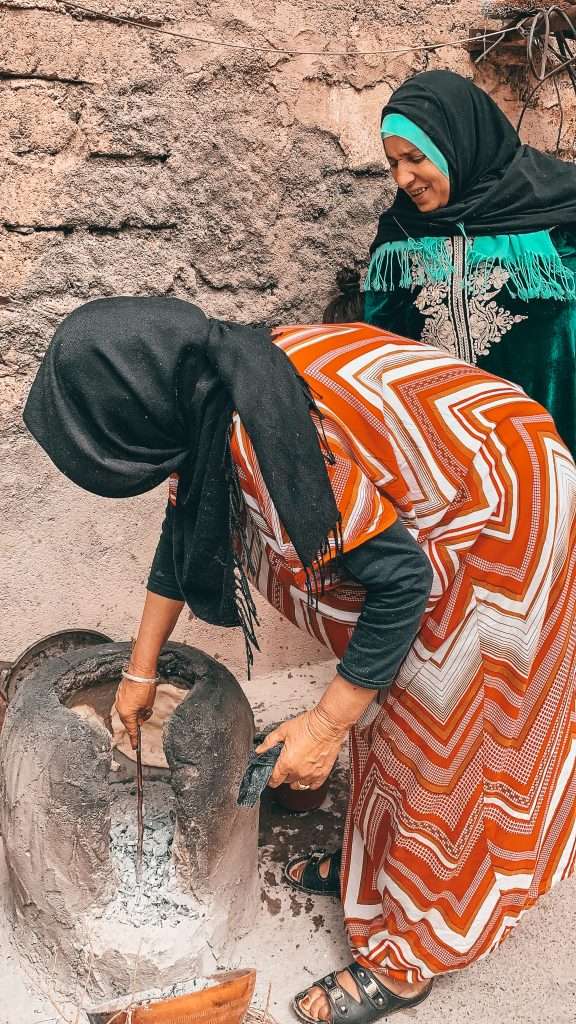
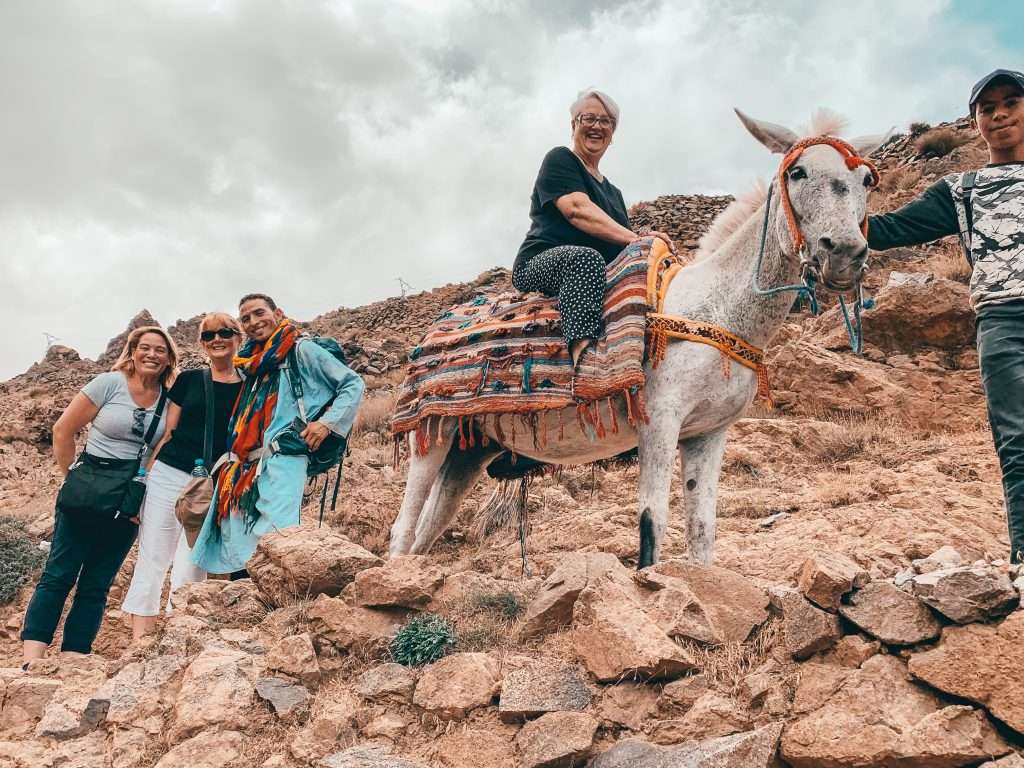
The Desert: The Vast Sands of the Sahara
No trip to Morocco is complete without experiencing the magic of the Sahara Desert. Imagine riding a camel over golden dunes, watching the sunset paint the sky in hues of orange and pink, and spending the night under a blanket of stars. The Sahara is a place of serene beauty and profound silence, offering a sense of peace and connection to nature.
Exploring the Sahara: Unveiling the Mystique of Morocco’s Desert
The Sahara Desert, one of the world’s most iconic and mesmerizing landscapes, offers a unique and unforgettable experience for travelers to Morocco. Its vast, golden dunes, dramatic landscapes, and profound silence create an atmosphere of serene beauty and timeless wonder. Here are some must-see and must-do activities to fully immerse yourself in the magic of the Moroccan Sahara:
1. Camel Trekking: Journey Across the Dunes
One of the quintessential experiences in the Sahara is camel trekking. Ride atop a gentle camel and traverse the undulating dunes, soaking in the expansive desert views. This traditional mode of transport allows you to connect with the ancient nomadic lifestyle and witness the changing colors of the sands, especially during sunrise and sunset.
2. Erg Chebbi and Erg Chigaga: Majestic Sand Dunes
Erg Chebbi and Erg Chigaga are two of the most famous dune fields in Morocco. Erg Chebbi, near the town of Merzouga, features some of the tallest dunes, rising up to 150 meters (500 feet). Erg Chigaga, more remote and less frequented, offers an equally stunning but more secluded desert experience. Both locations provide breathtaking scenery and opportunities for exploration.
3. Overnight Desert Camp: Sleep Under the Stars
Spending a night in a desert camp is a magical experience. Traditional Berber tents equipped with modern comforts offer a cozy retreat in the heart of the desert. Enjoy a traditional Moroccan dinner, listen to Berber music around the campfire, and gaze at the star-filled sky in one of the clearest night skies you’ll ever see.
4. Quad Biking and Sandboarding: Adventure in the Dunes
For thrill-seekers, quad biking and sandboarding provide an exhilarating way to explore the desert. Navigate the dunes on a quad bike, feeling the rush of adrenaline as you ride up and down the sandy slopes. Sandboarding, akin to snowboarding but on sand, offers a fun and adventurous way to descend the dunes.
5. Visit a Nomadic Berber Family: Cultural Immersion
A visit to a nomadic Berber family offers a unique insight into the traditional way of life in the Sahara. Learn about their customs, daily routines, and survival techniques in the harsh desert environment. This cultural exchange often includes sharing a cup of mint tea, known as “Moroccan whiskey,” and observing traditional bread baking in clay ovens.

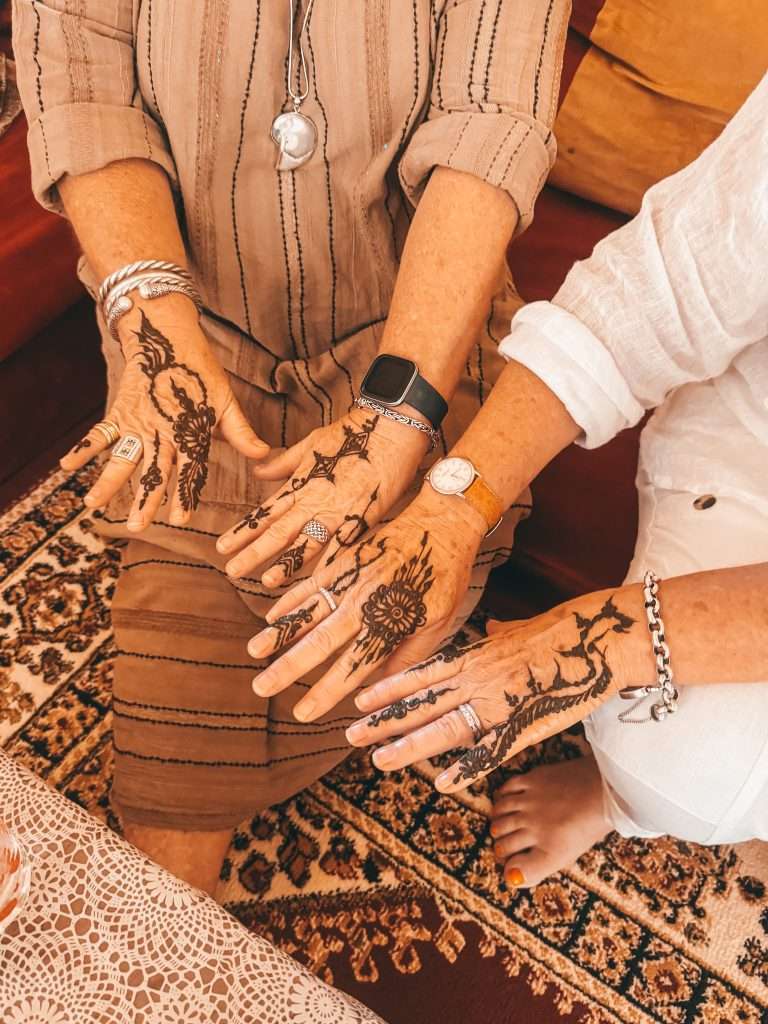
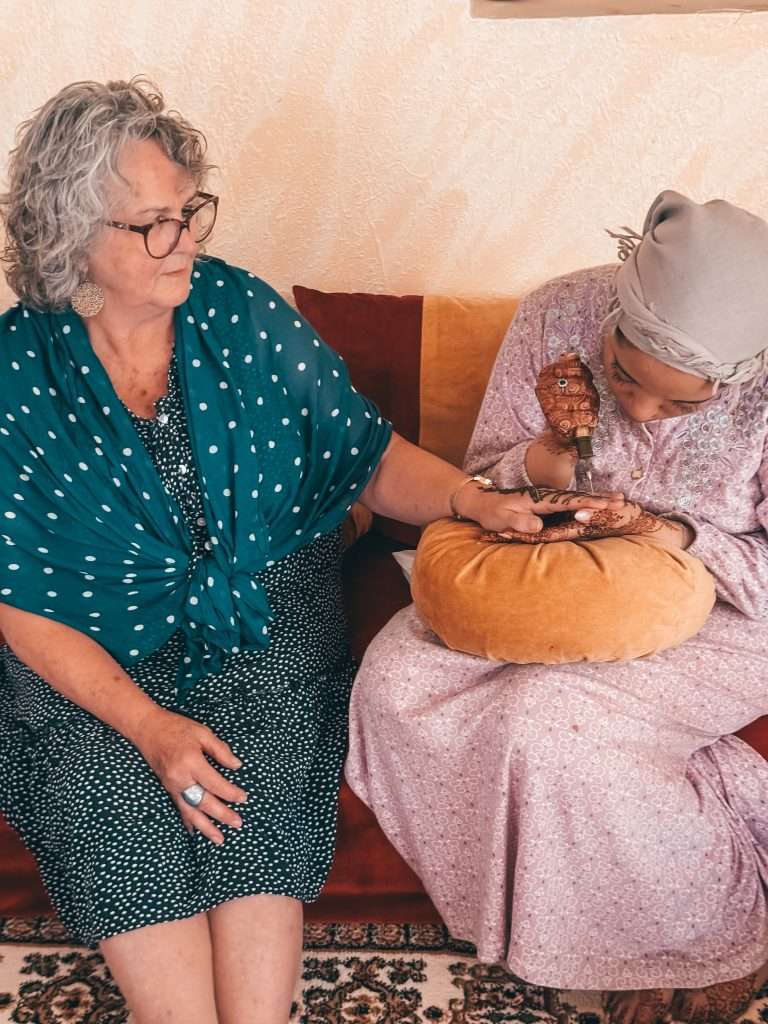
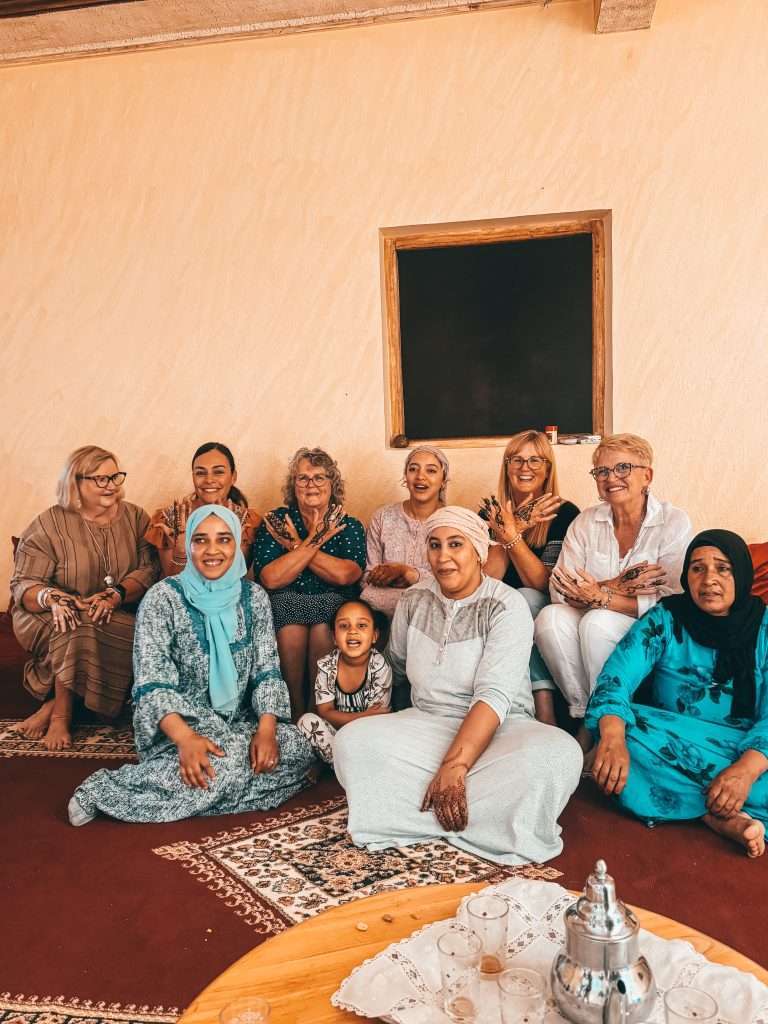
6. Explore the Oases: Verdant Havens in the Desert
The Sahara is dotted with oases, lush green havens that provide a stark contrast to the surrounding arid landscape. Visit the oasis towns of Erfoud and Rissani to see date palm groves and explore the local markets. These oases are vital to the desert communities, offering water, shade, and sustenance.
7. Fossil Hunting: Discover Ancient Treasures
The Sahara Desert is rich in fossils, remnants of a time when this region was covered by ancient seas. Join a guided fossil hunting tour to uncover ancient marine fossils, including ammonites and trilobites, embedded in the rocks and sands. Erfoud is particularly known for its fossil quarries.
8. Draa Valley: A Journey Through Time
The Draa Valley, located on the edge of the Sahara, is a picturesque region with lush palm groves, traditional kasbahs (fortified homes), and ancient villages. Travel through this valley to appreciate the historical and cultural heritage of the region. The Draa River, one of Morocco’s longest rivers, supports the valley’s fertile lands.
9. Visit Khamlia Village: Gnawa Music Experience
Khamlia, a small village near Merzouga, is known for its vibrant Gnawa music. The village’s inhabitants, descendants of African slaves, have preserved this unique musical tradition. Attend a live performance to experience the hypnotic rhythms and spiritual melodies that characterize Gnawa music.
10. Sunset and Sunrise Views: Natural Spectacles
Witnessing the sunrise and sunset over the Sahara dunes is a profoundly moving experience. The play of light and shadow on the golden sands creates a mesmerizing spectacle. Sunrise often brings a sense of tranquility and renewal, while sunset bathes the desert in a warm, golden glow.
The Sahara Desert in Morocco is a place of unparalleled beauty and mystique, offering a diverse array of activities and experiences. Whether you’re seeking adventure, cultural immersion, or simply a moment of serene reflection, the Sahara promises a journey that will leave you with lasting memories and a deep appreciation for the timeless allure of the desert. Joining a small group tour here allows for a more intimate experience and better connection with the local Berber communities who call the desert home.
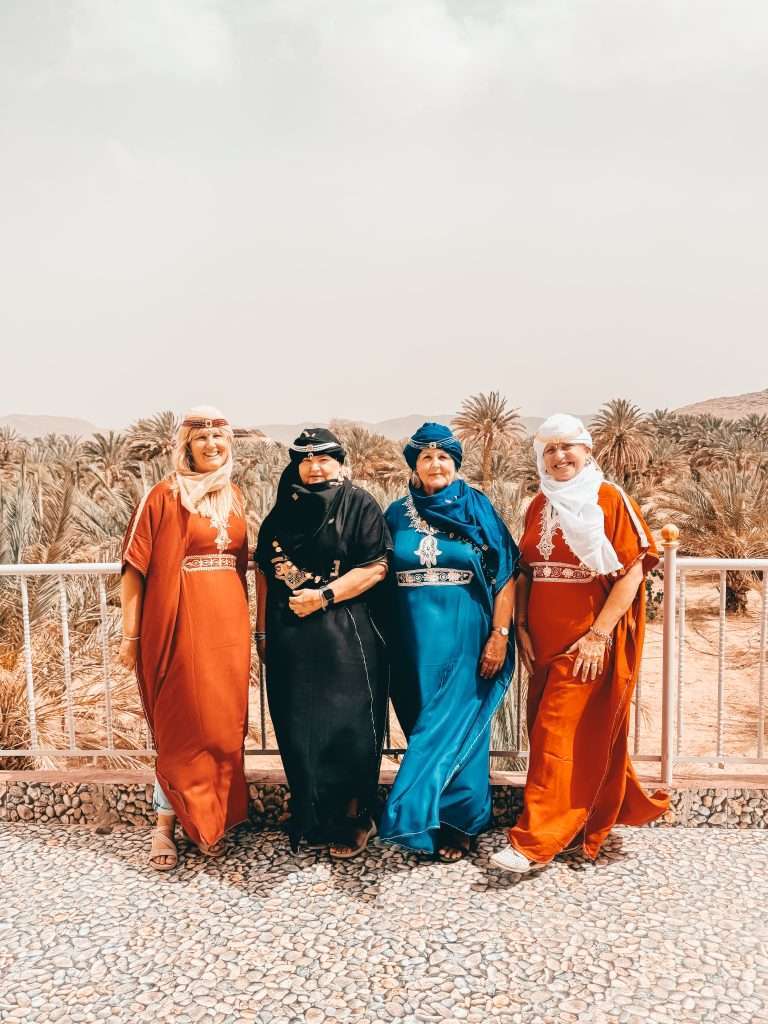
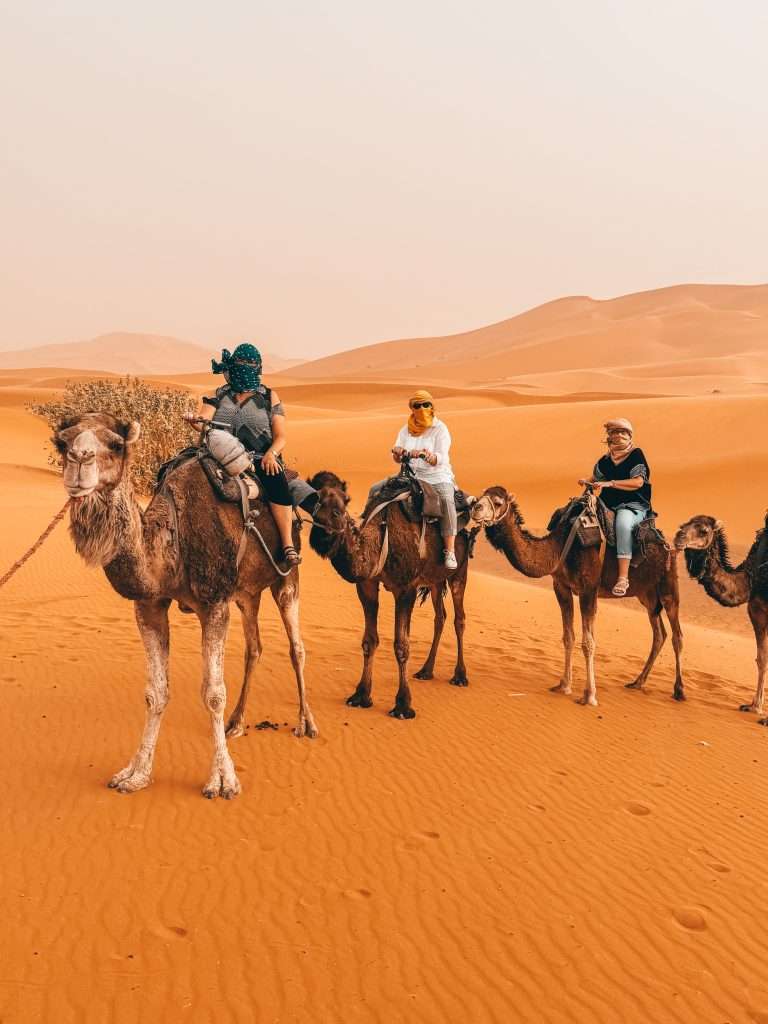
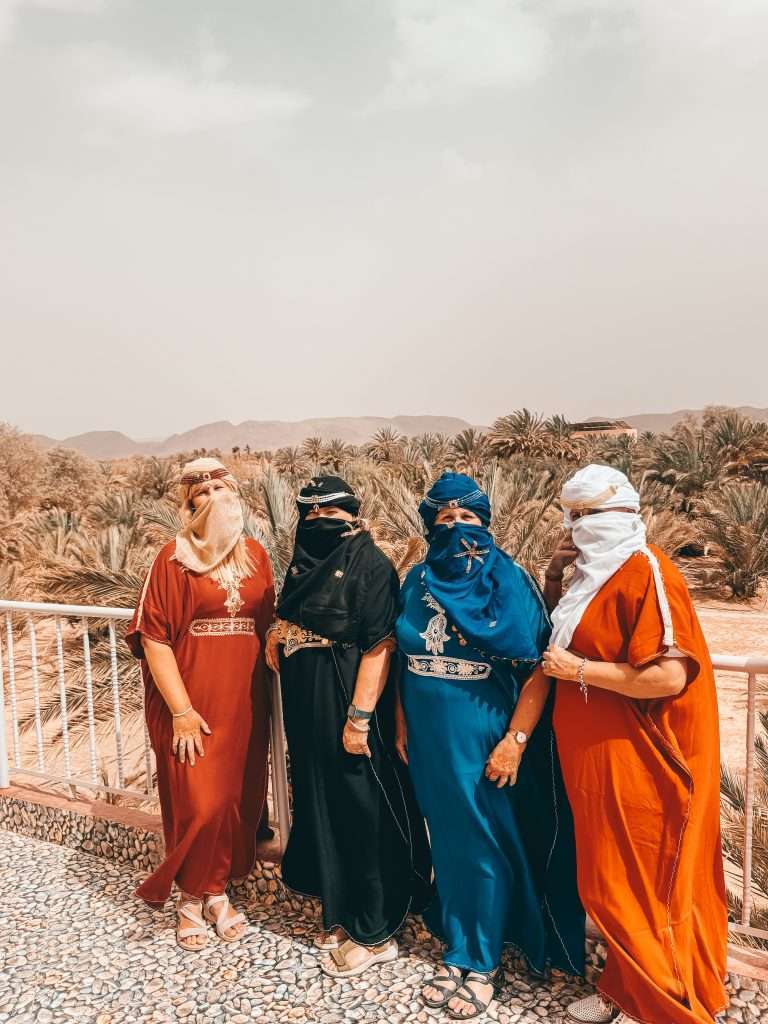
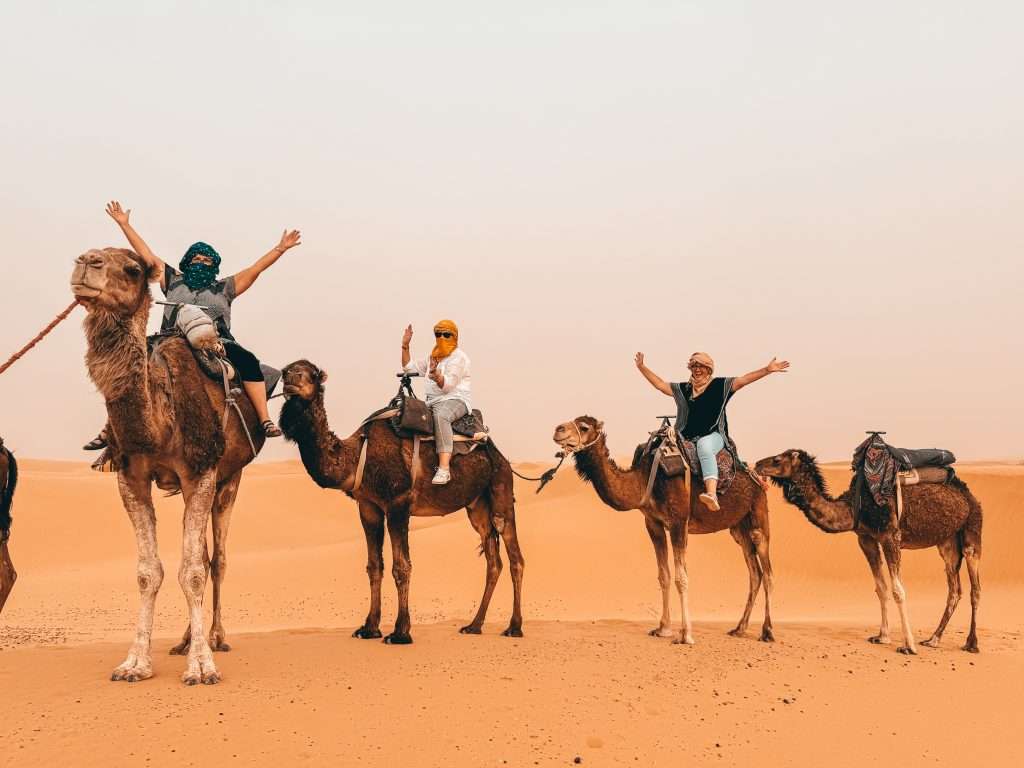
The Atlantic Coast: Coastal Charms and Sea Breezes
Morocco’s Atlantic coast is a breathtaking stretch of sandy beaches, rugged cliffs, and charming coastal towns.
Essaouira: This coastal gem is known for its laid-back vibe, historic medina, and vibrant arts scene. Wander through the narrow streets lined with blue and white buildings, enjoy fresh seafood at the harbor, or simply relax on the beach.
Essaouira is known as the windy city so don’t be surprised by the difference in temperature (which can also be a welcomed relief in the hot summer months) The best time to visit Essaouira is from March to October when the weather is warm and sunny.
At night time the main square comes alive with entertainers and sitting at one of the restaurants facing the street is a locals way of enjoying this night time entertainment. Need to get in early to grab a seat at these restaurants though as they go fast and people stay for a long time watching the world go by.
Also, if you’re wanting to shop, Essaouira is a great place with locally made baskets and raffia shoes, rugs, pillow cases, leather bags and shoes, a lot of artisans sharing their hand made goods here.
Casablanca: As Morocco’s largest city, Casablanca is a bustling metropolis with a mix of modernity and tradition. Visit the stunning Hassan II Mosque, stroll along the Corniche, and explore the vibrant city center.
And if you love shopping Casablanca has the BIGGEST shopping Mall in all of Africa.
Spring and autumn are the best times to visit Casablanca to avoid the peak summer heat.
Agadir: Known for its beautiful beaches and resort atmosphere, Agadir is perfect for those looking to unwind by the sea. The city offers a range of activities from surfing to hiking in the nearby Atlas Mountains.
There is a new cable car at the Port too, the Agadir Oufella Cable Car. This will take you to the top of the mountain to see where the Old City once stood before it was mostly destroyed in 1960 when it was hit by an earthquake only leaving 10% still standing.
There is a huge strip of beach line for many people to come and visit and relax during the summer months.
The best time to visit Agadir is from May to October when the weather is ideal for beach activities.
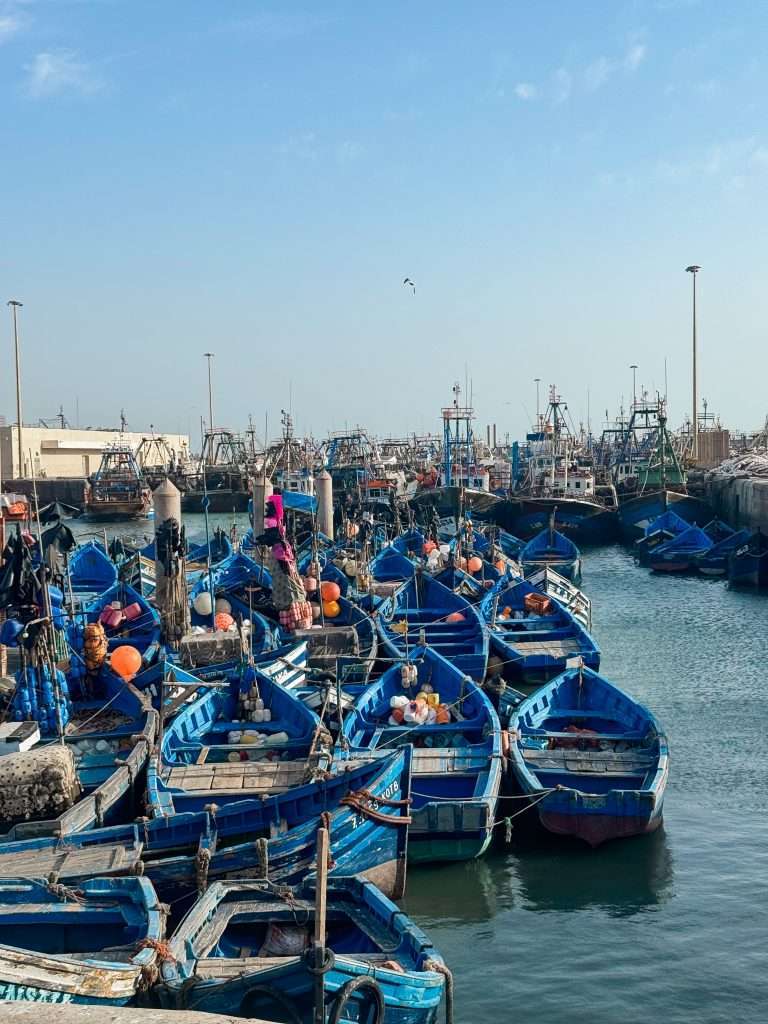
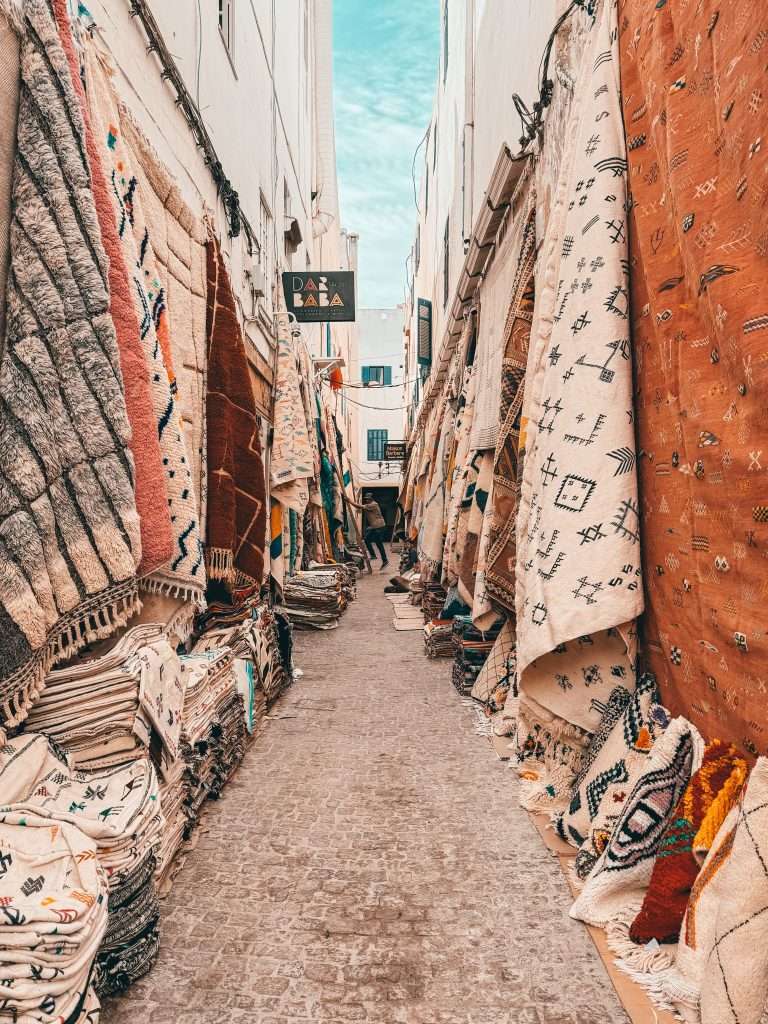
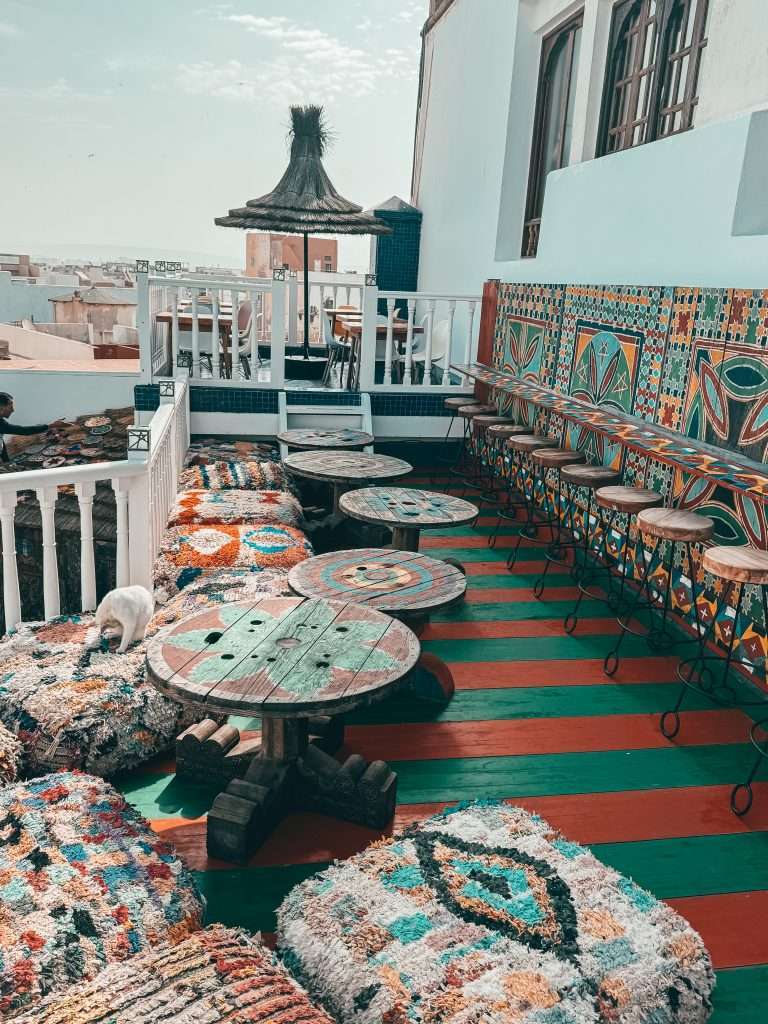
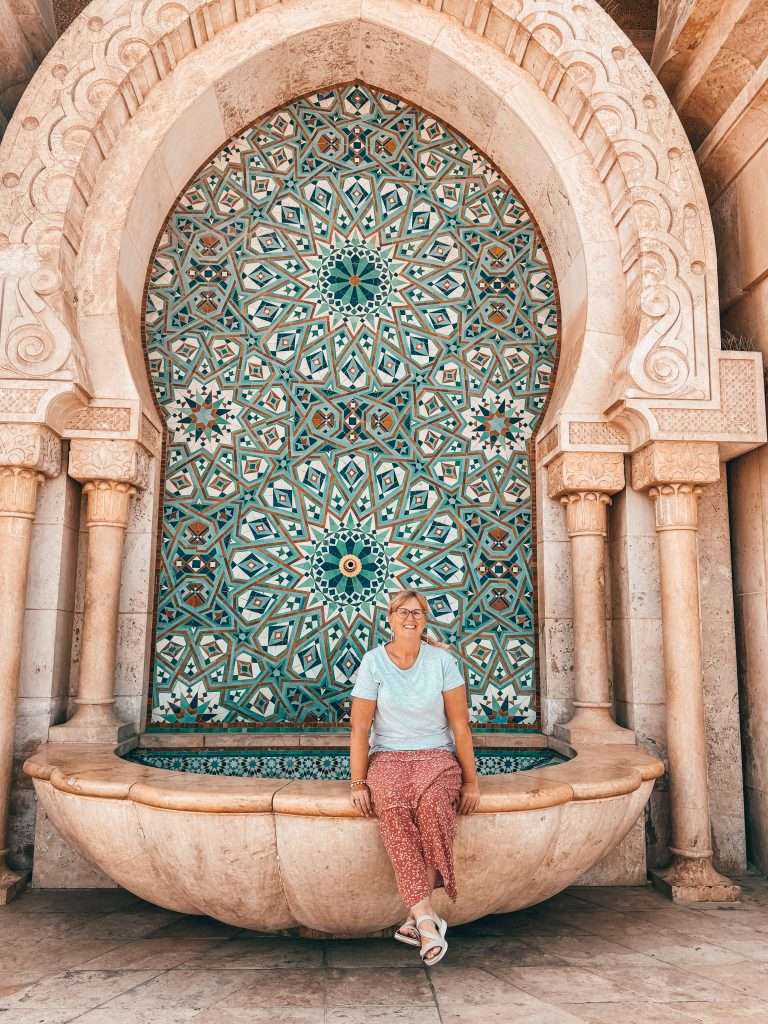
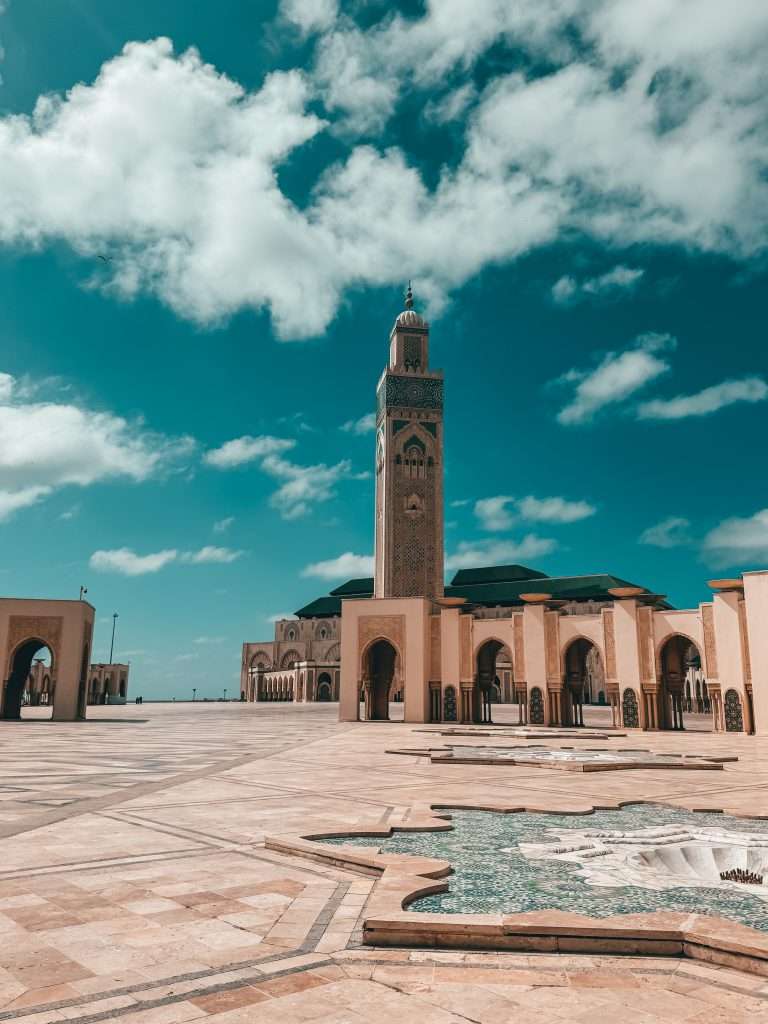
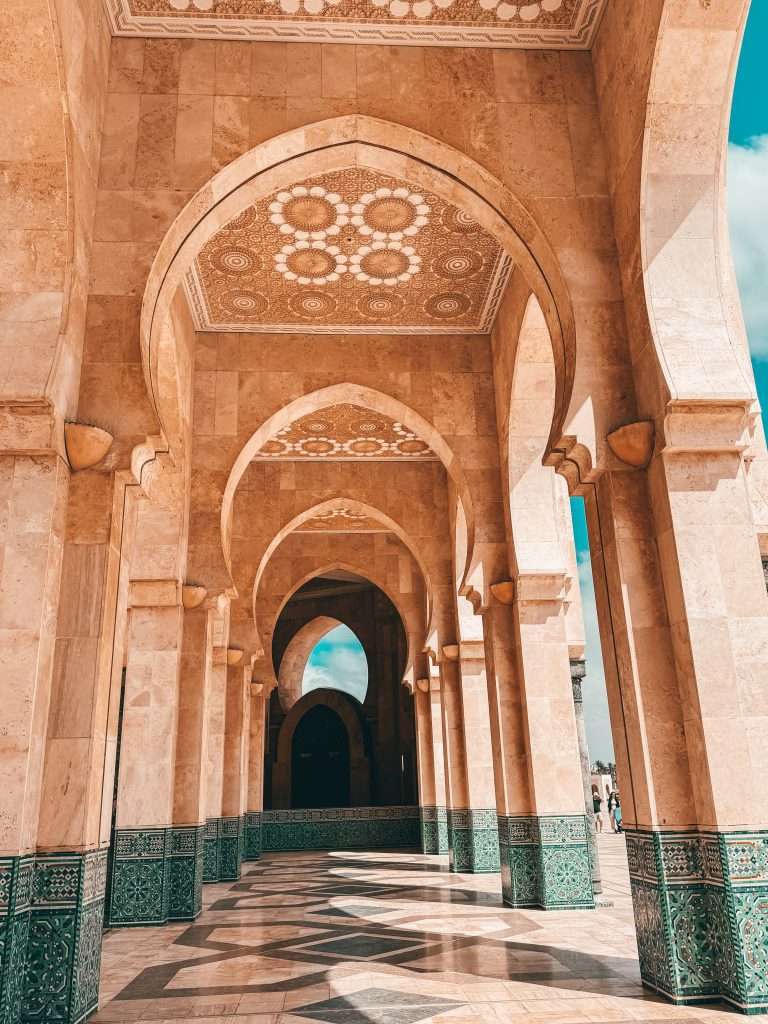
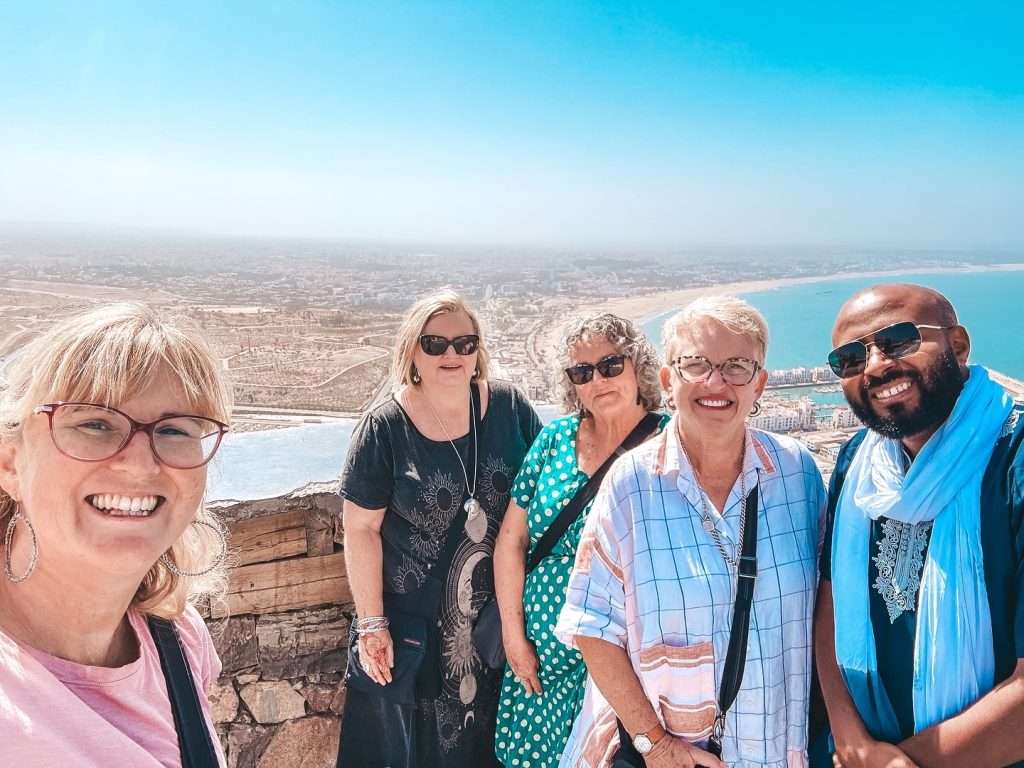
The People and Culture: Heartfelt Connections
One of the most beautiful aspects of Morocco is its people. The warmth, hospitality, and generosity of Moroccans create a sense of connection and belonging that stays with you long after you leave. Traveling in a small group enhances this experience, allowing for deeper interactions and more meaningful connections.
I have been blessed to lead each group into a local family’s home for lunch, where we share not just a meal, but laughter, stories, and cultural exchanges. This year, we had the incredible honor of being invited to a family home for Eid. It was a truly special experience as we celebrated together, sharing food and laughter. These moments of genuine connection are what make travel so enriching and unforgettable.

A Call to Adventure
Morocco is a land of endless discovery, where every corner holds a new surprise and every moment is filled with wonder. From the vibrant chaos of its cities to the tranquil beauty of its deserts, coasts, and mountains, Morocco offers a rich and diverse experience that will captivate your heart.
I invite you to join me on a journey to this magical country, to explore its vibrant landscapes, immerse yourself in its rich culture, and connect with its wonderful people. Let Morocco leave its mark on your soul, as it has on mine.
Check out our tour section for new dates and tours or reach out to me through contact form if you’d like some details on local guides and drivers for Morocco.

